How can you tell if your kombucha has mold? And can you save a moldy SCOBY? Diving into your worst kombucha nightmare (and how to prevent it) here!
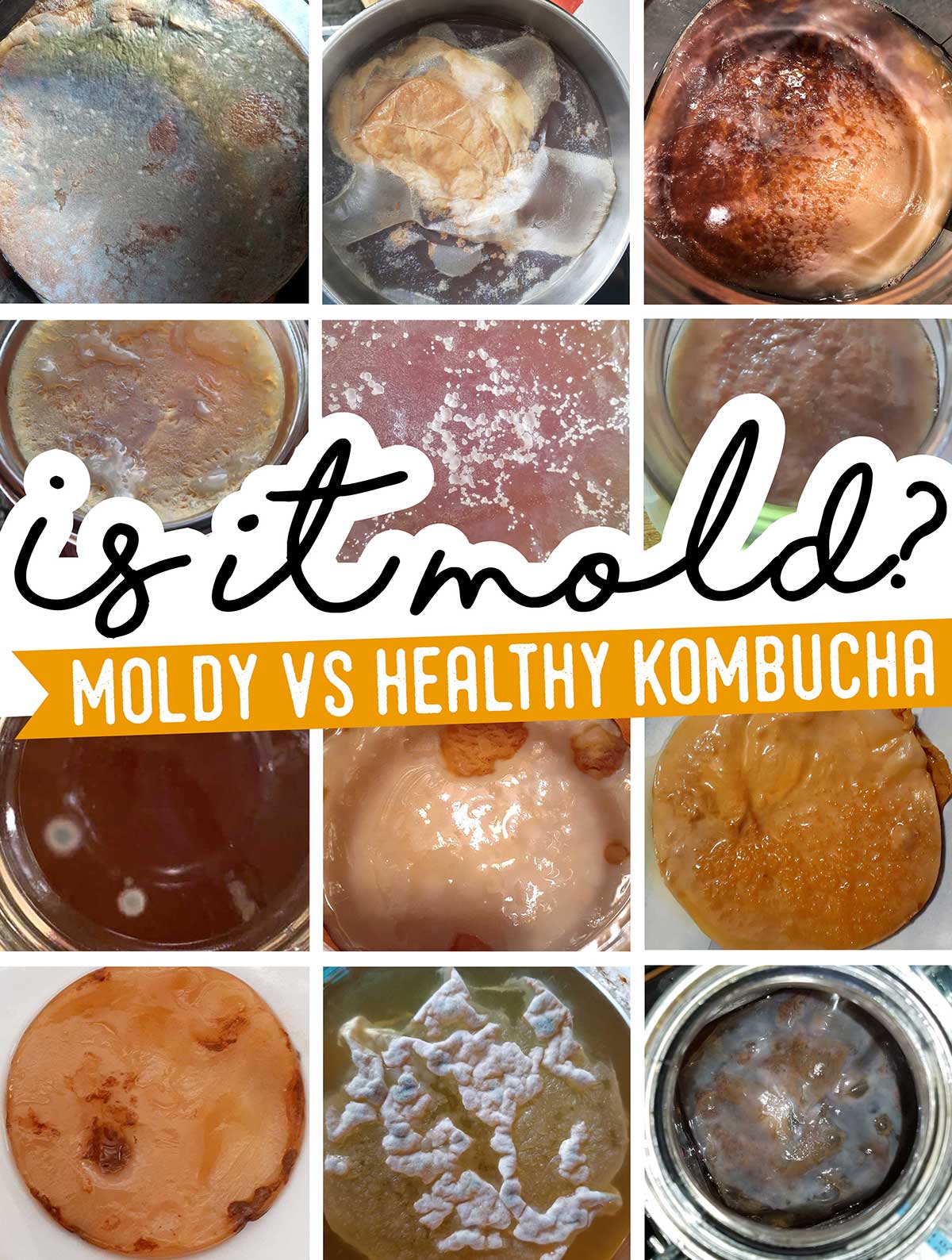
It’s every kombucha brewers worst fear…mold. But is it really as scary and world shattering as people seem to believe? No.
The thing is, kombucha mold is totally avoidable, and the chances or contracting mold are quite low if you’re brewing kombucha properly.
What is kombucha mold?
Kombucha mold is simply an overgrowth of bad bacteria or fungus. It isn’t much different than the mold that might grow on an old loaf of bread.
And while you shouldn’t drink any kombucha that has been in contact with mold (just as you wouldn’t eat that moldy bread), it’s not the end of the world!
What does kombucha mold look like
Though the chances are low, if mold is going to happen it will likely be in the first fermentation, when the kombucha acidity isn’t high enough to fend off the bad bugs. Once kombucha is bottled in the second fermentation, the acidity of the brew should prevent mold from growing.
While there are many different strains of mold that can grow – each with their own unique appearance – they usually have a few specific traits:
- Fuzzy or dry appearance
- Circular shape
- Colors range, but may be white, green, black, or blue
- On the surface of the kombucha (most mold needs air to survive)
Here are a few photos of kombucha mold for your reference. (Have a moldy SCOBY photo and want to include it in this gallery to help more people ID potentially moldy kombucha? Email me!)
(If your kombucha looks odd but it doesn’t look like mold, you could have kahm yeast.)
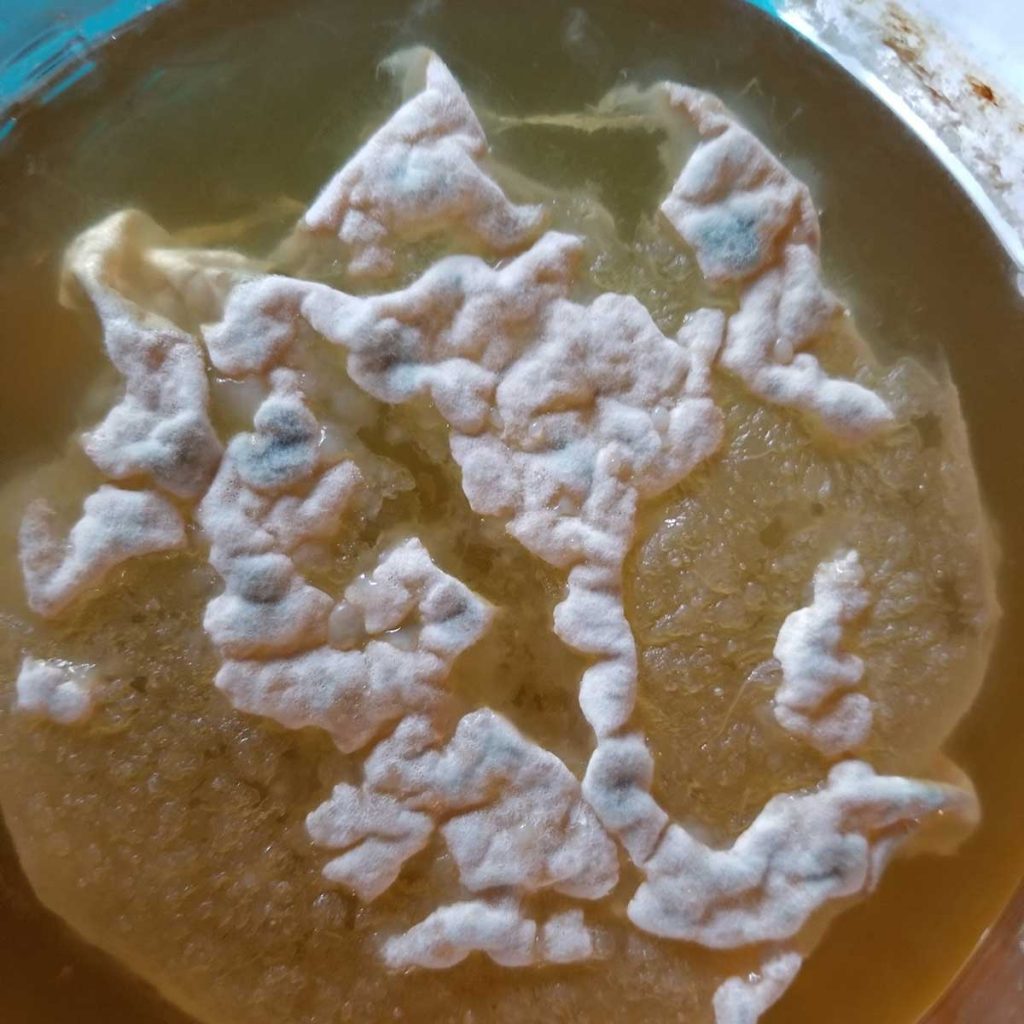
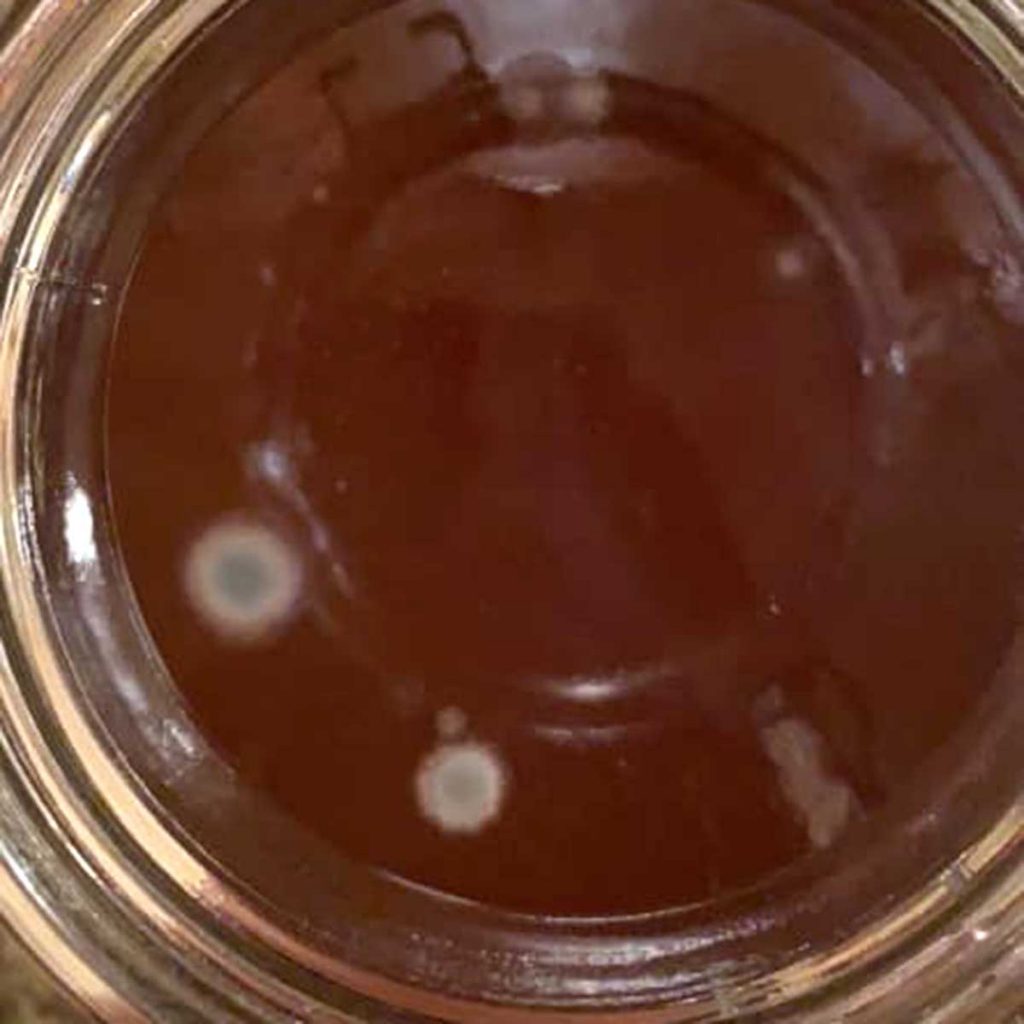
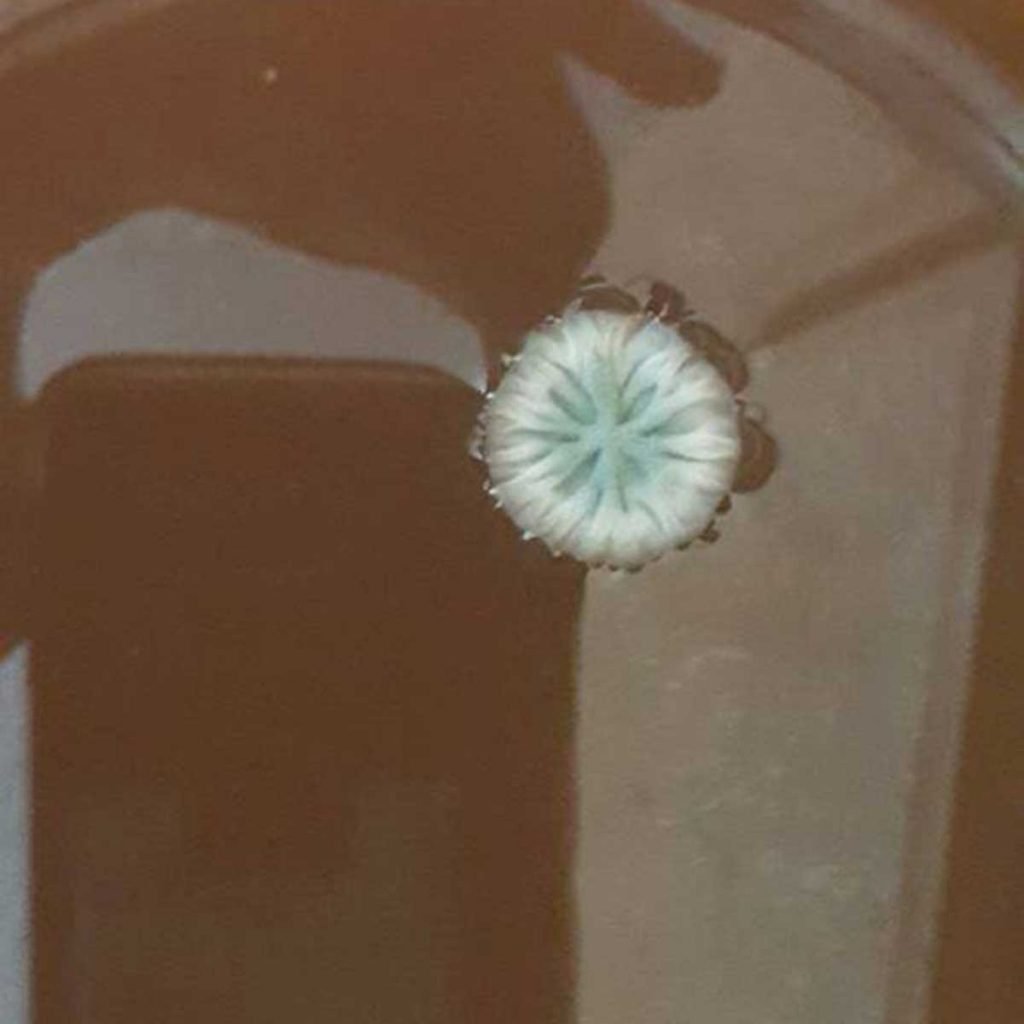
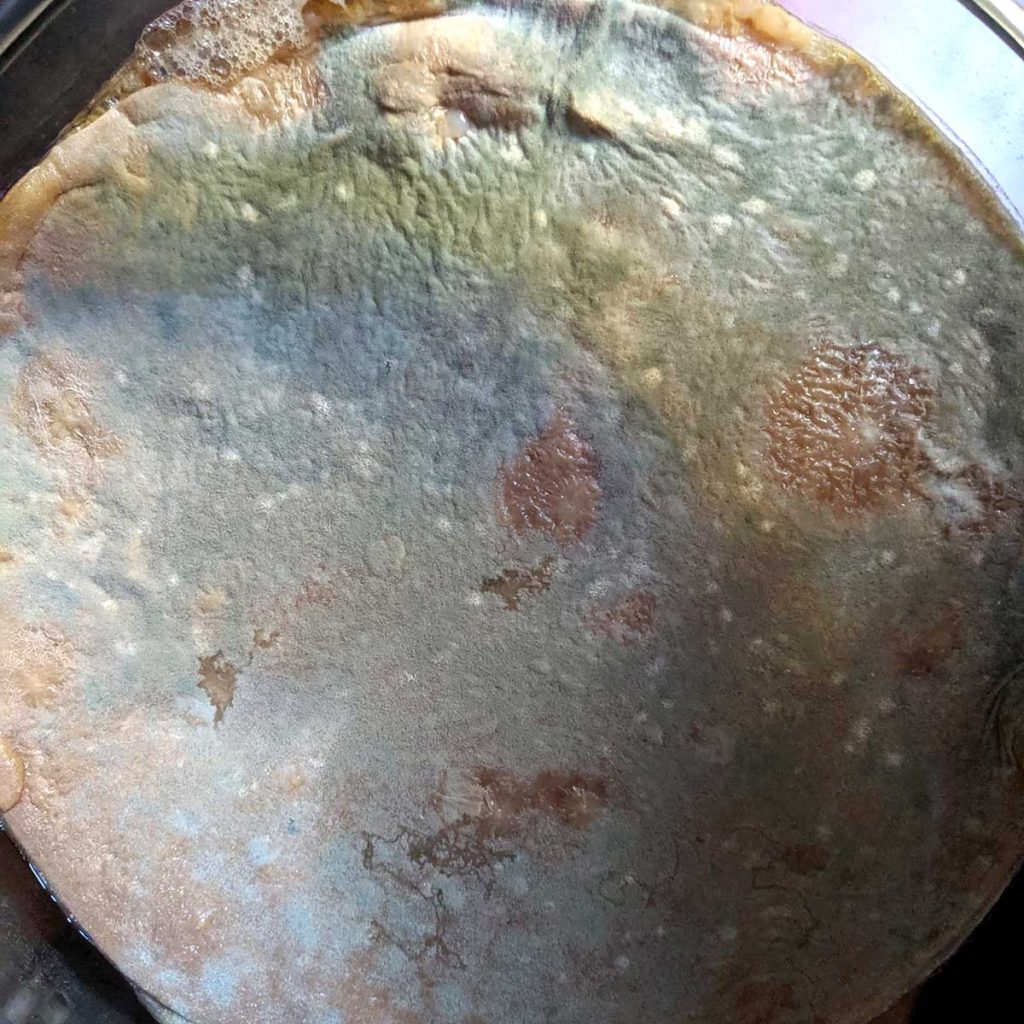
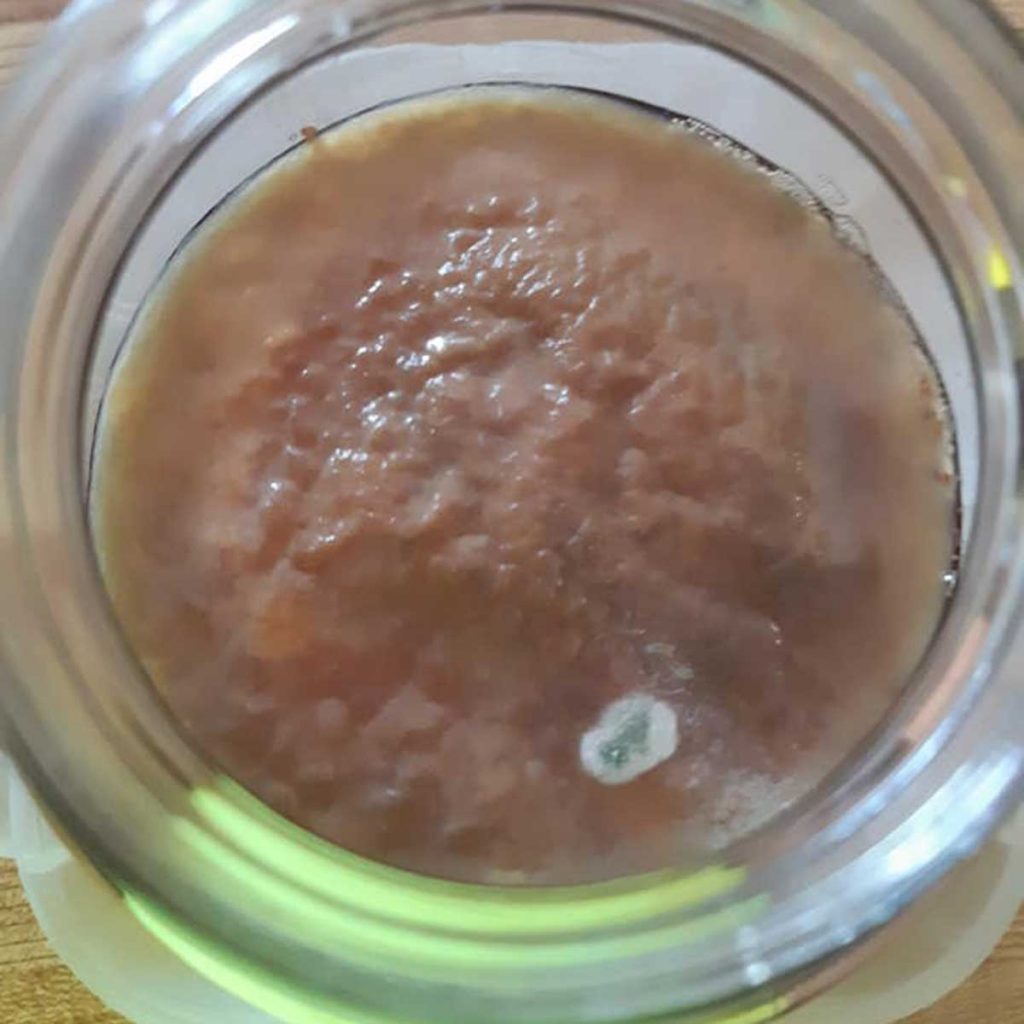
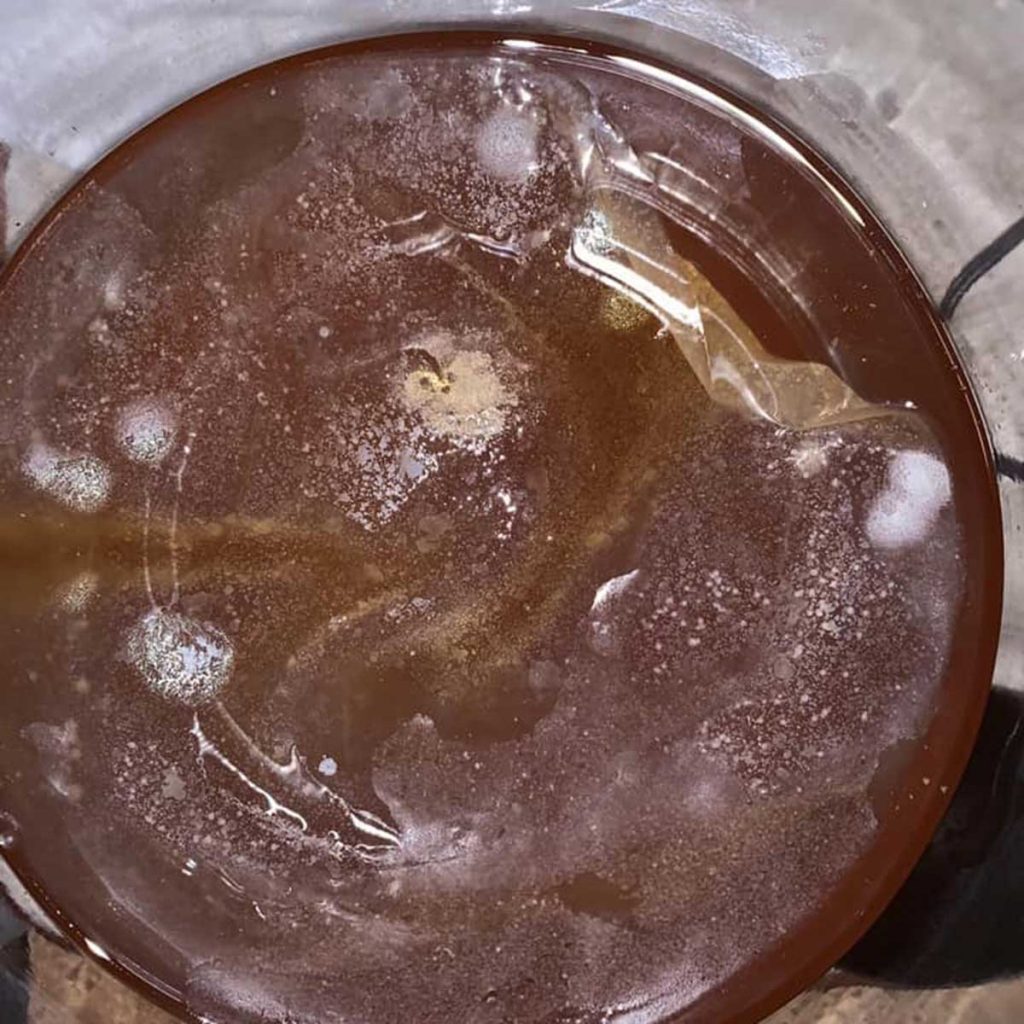
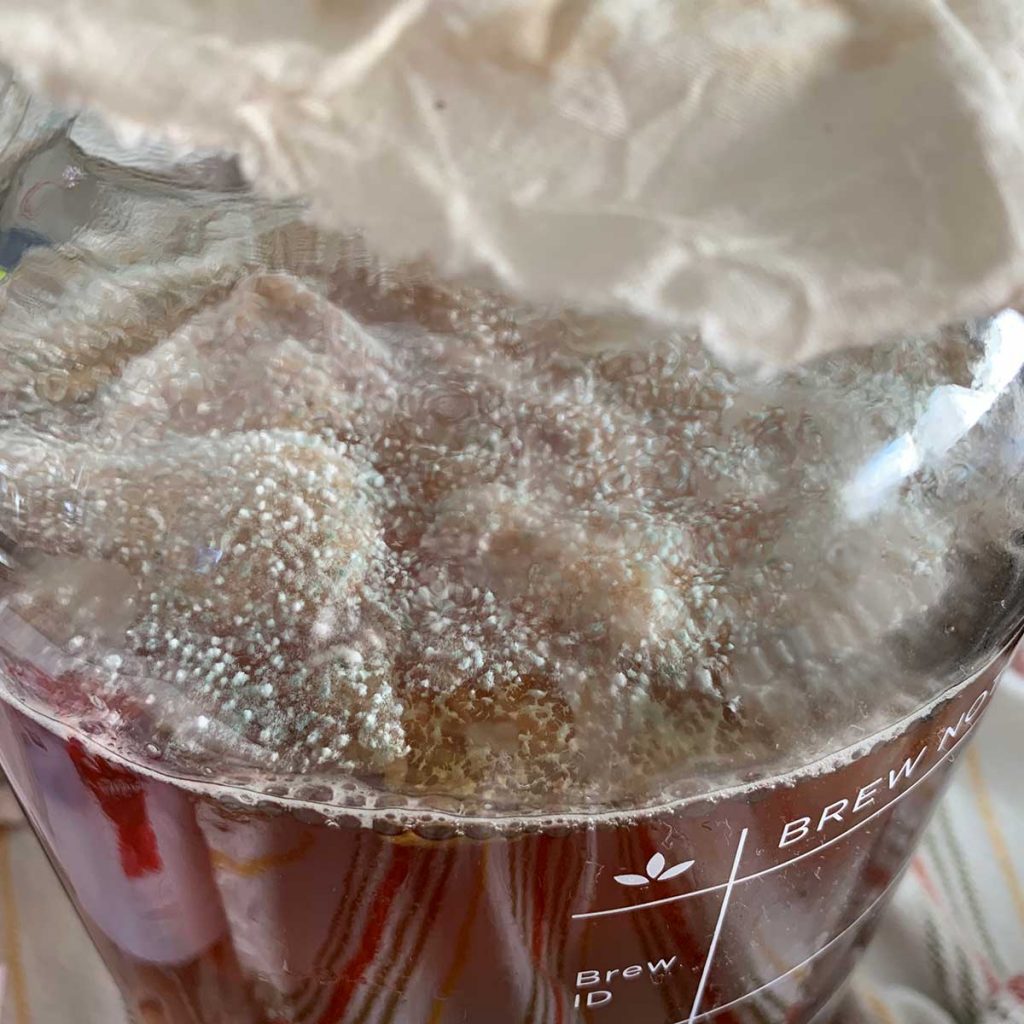
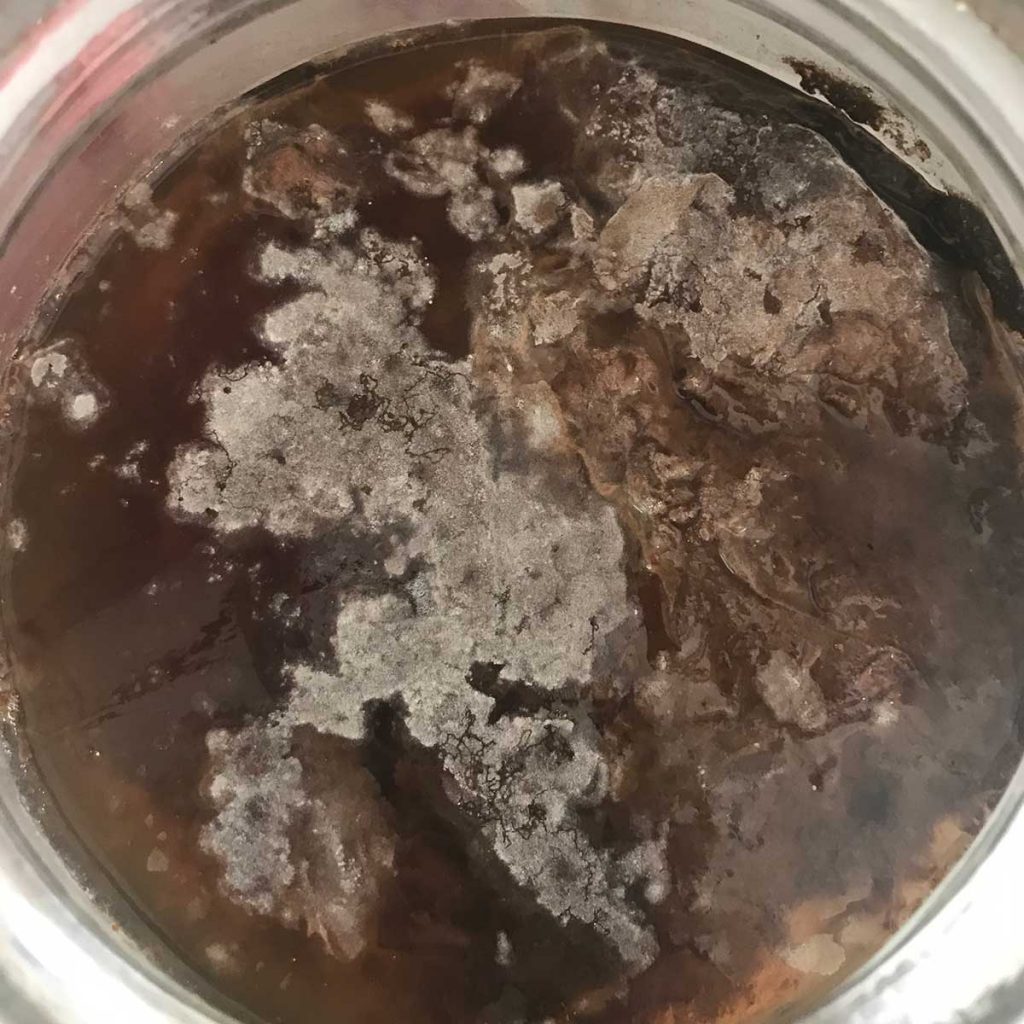
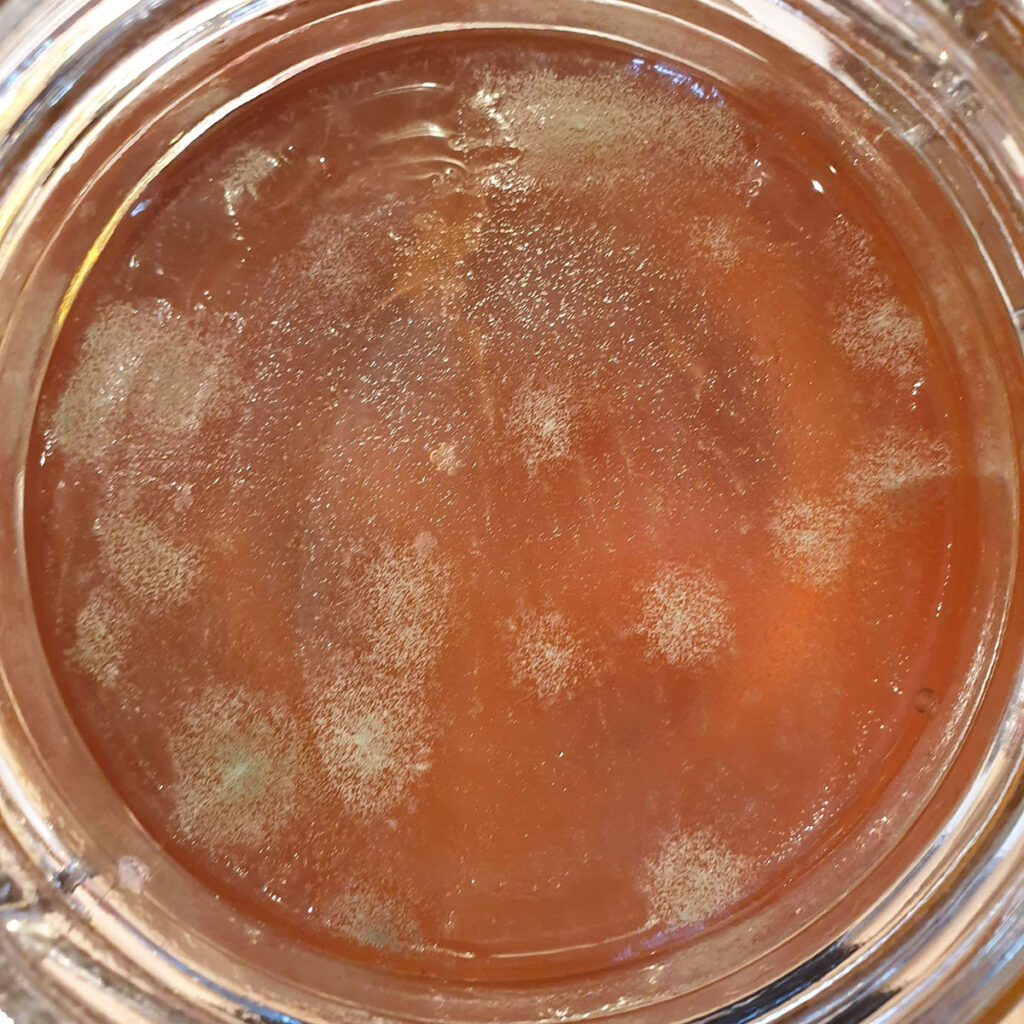
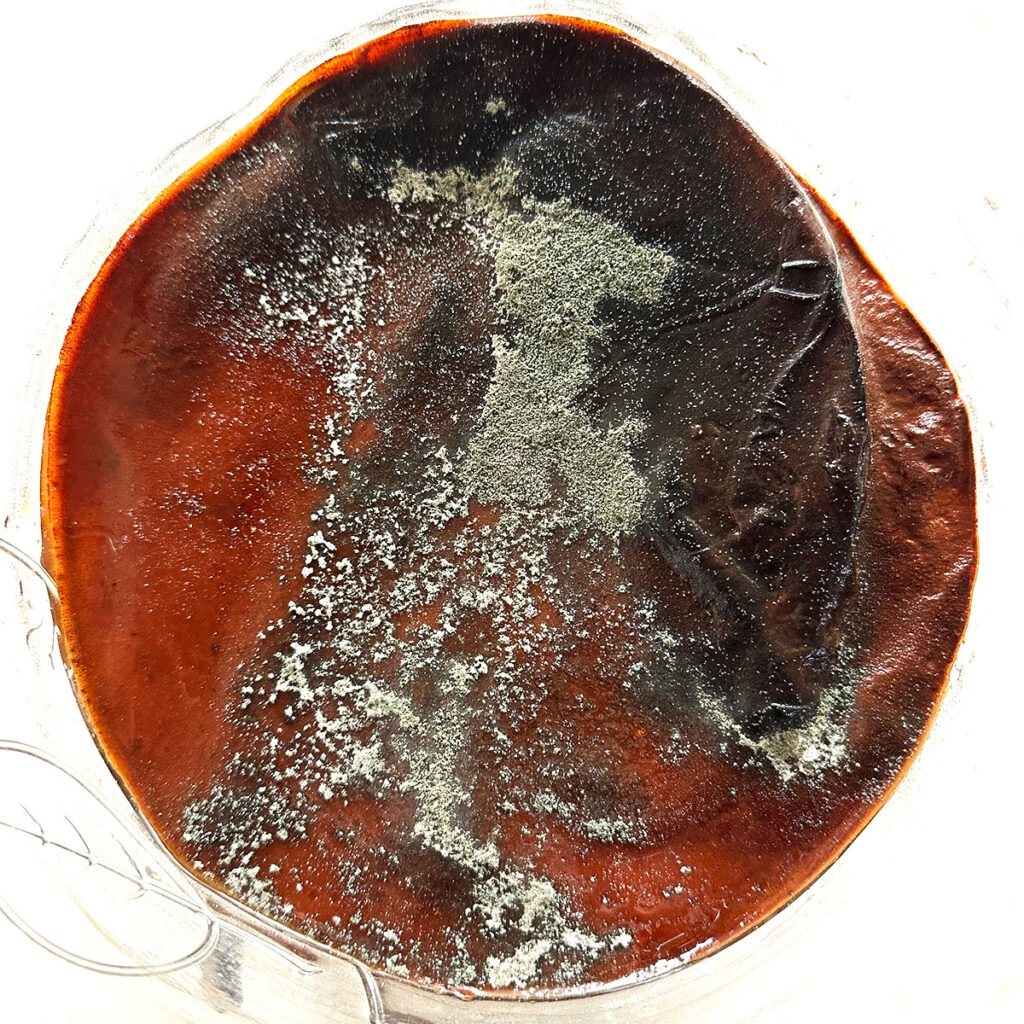
How to prevent mold in your kombucha
If you got mold, it’s because something went wrong in the process of brewing. Here are a few common reasons you may have got mold:
Not enough starter: If you didn’t use enough starter kombucha, or the starter wasn’t strong, the kombucha may not have been acidic enough to defend itself from mold strains. You can use pH test strips to ensure your starter kombucha is strong and acidic (should be between 2.5 and 3.5).
Temperature too low: If the temperature is too low where you’re brewing, or if you put your first fermentation / SCOBY in the fridge, the bacteria and yeast go dormant. This means they can’t acidify your kombucha, and mold may grow. Never store your SCOBY in the fridge, and ensure you store your kombucha somewhere warm enough to prevent mold.
Supplies not clean enough: Mold spores may have slipped in through your supplies, such as if you used a dirty sponge to clean the jar. Learn to clean your supplies to prevent contamination.
Used the wrong ingredients: Herbal teas and different sugars can weaken the SCOBY over time. Be sure you’re using the best teas and best sugars for kombucha.
Wrong place: Where your fermentation station is located matters! Airborne contaminants from garbage, compost, fruit bowls, or even other fermentation projects (like kefir or kimchi) can contaminate your kombucha. Ensure your kombucha is stored away from these.
What if I’m not sure?
The thing is, kombucha looks weird even under normal circumstance. So what if you’re not sure?
Just give it a few days! If it’s mold, it will grow to look like something in the photos above. If it doesn’t grow, it’s probably just normal, weird kombucha stuff.
Here are some examples of normal kombucha SCOBYs for your reference. Not sure if yours is moldy or not? Feel free to ask in our Facebook group!
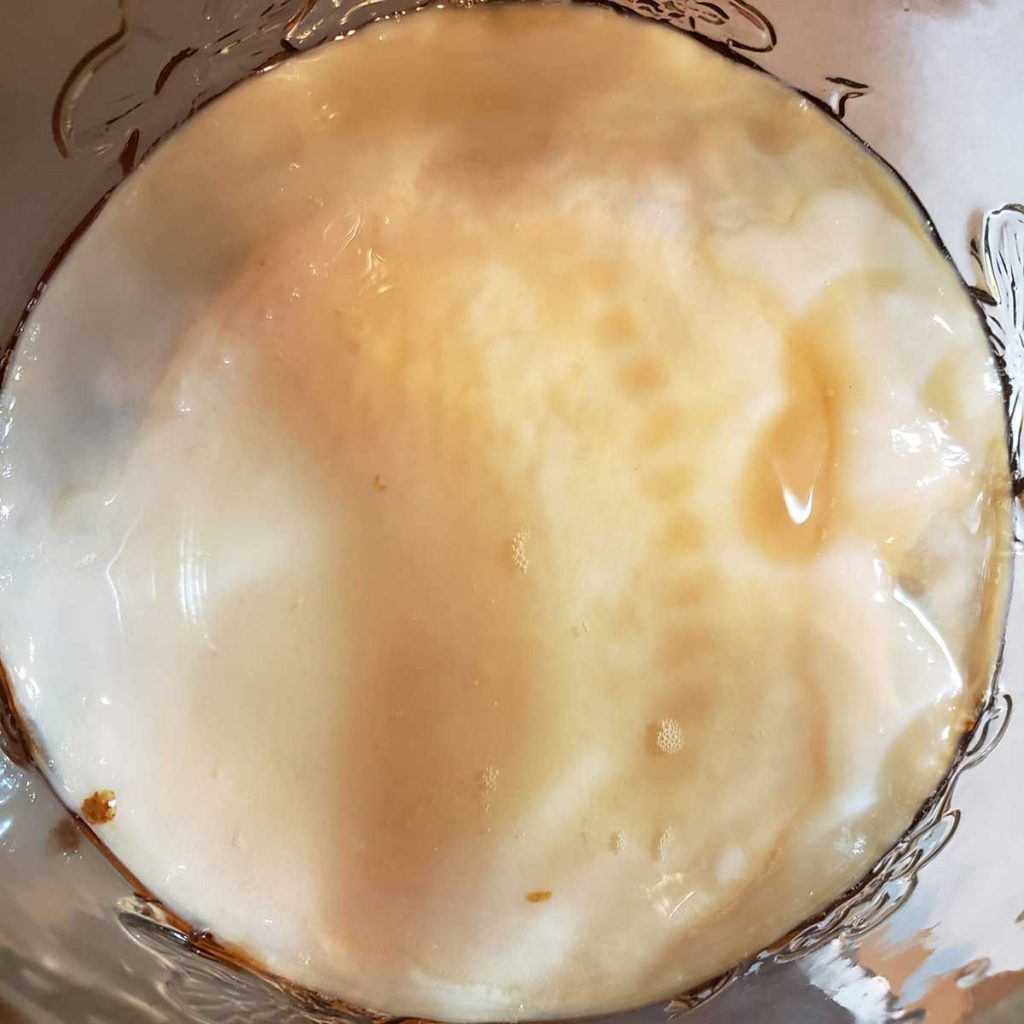
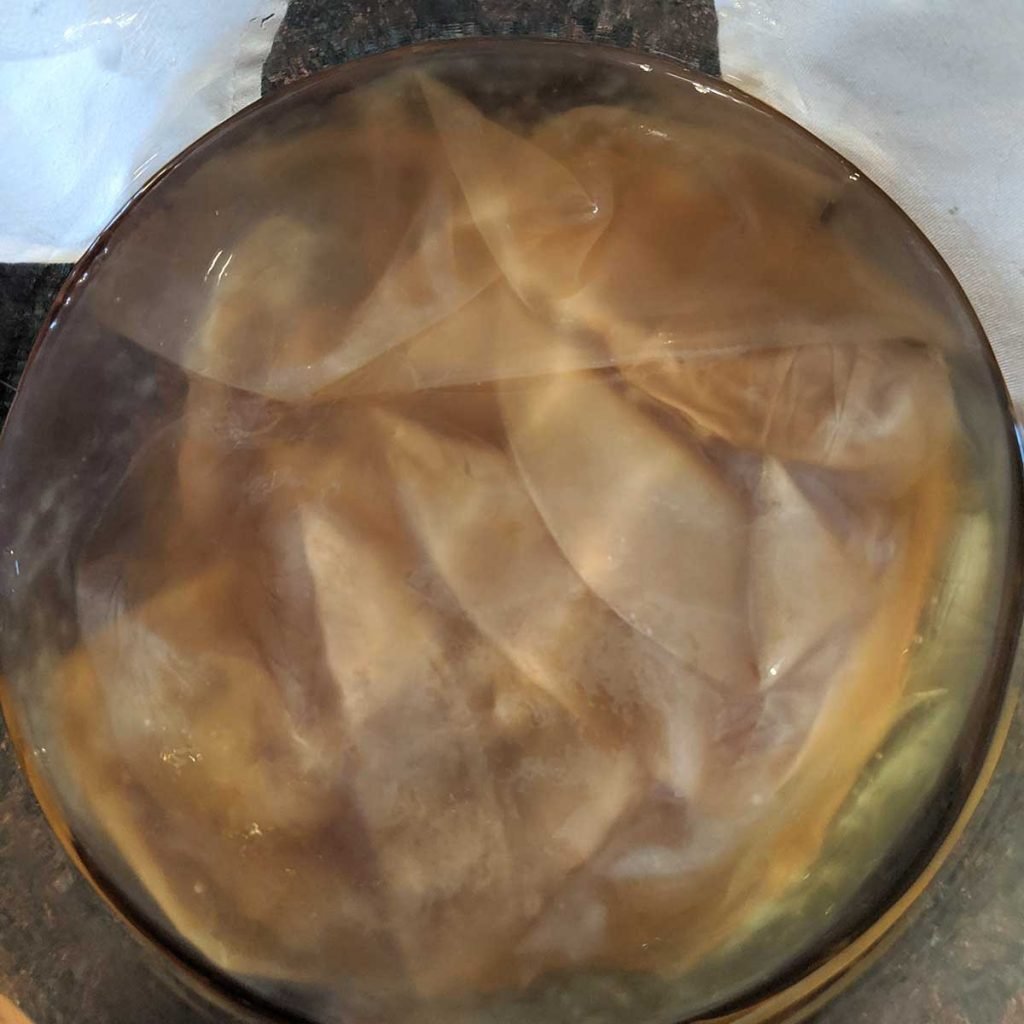
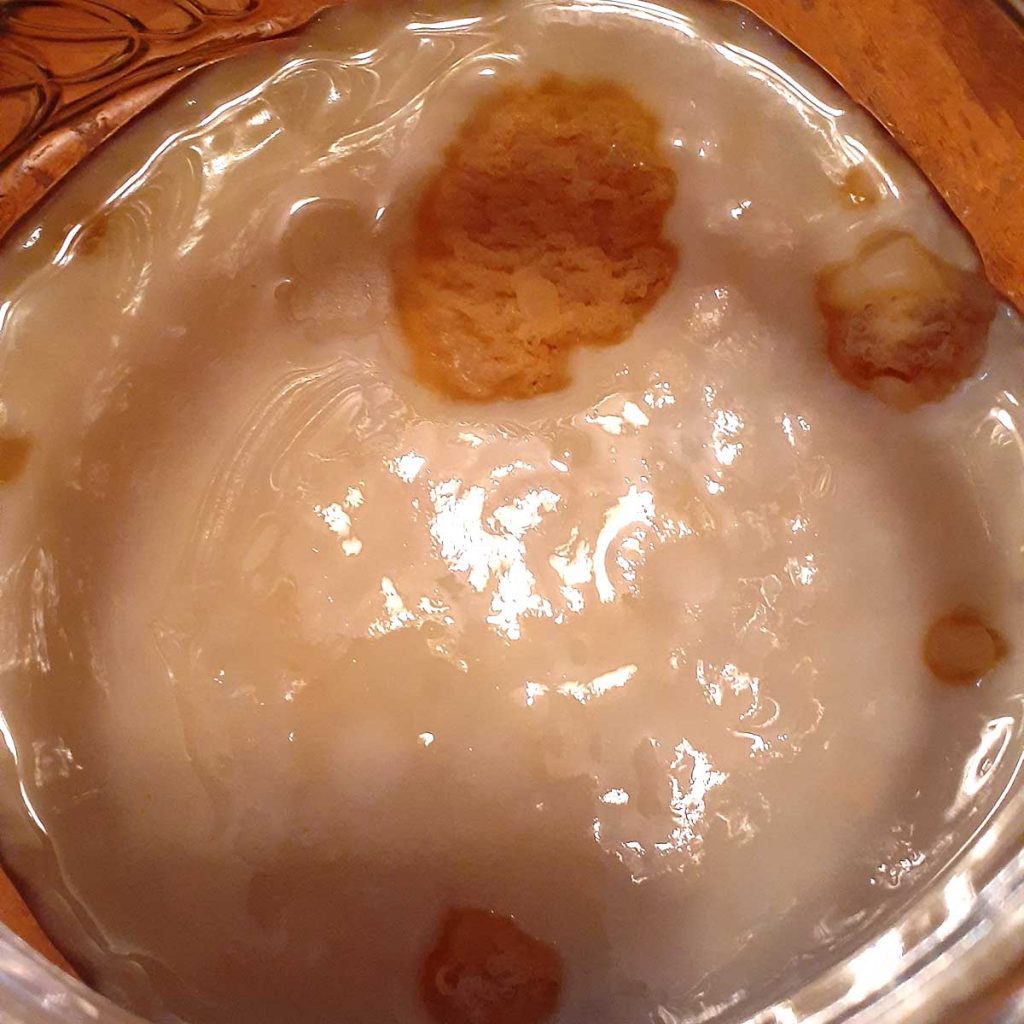
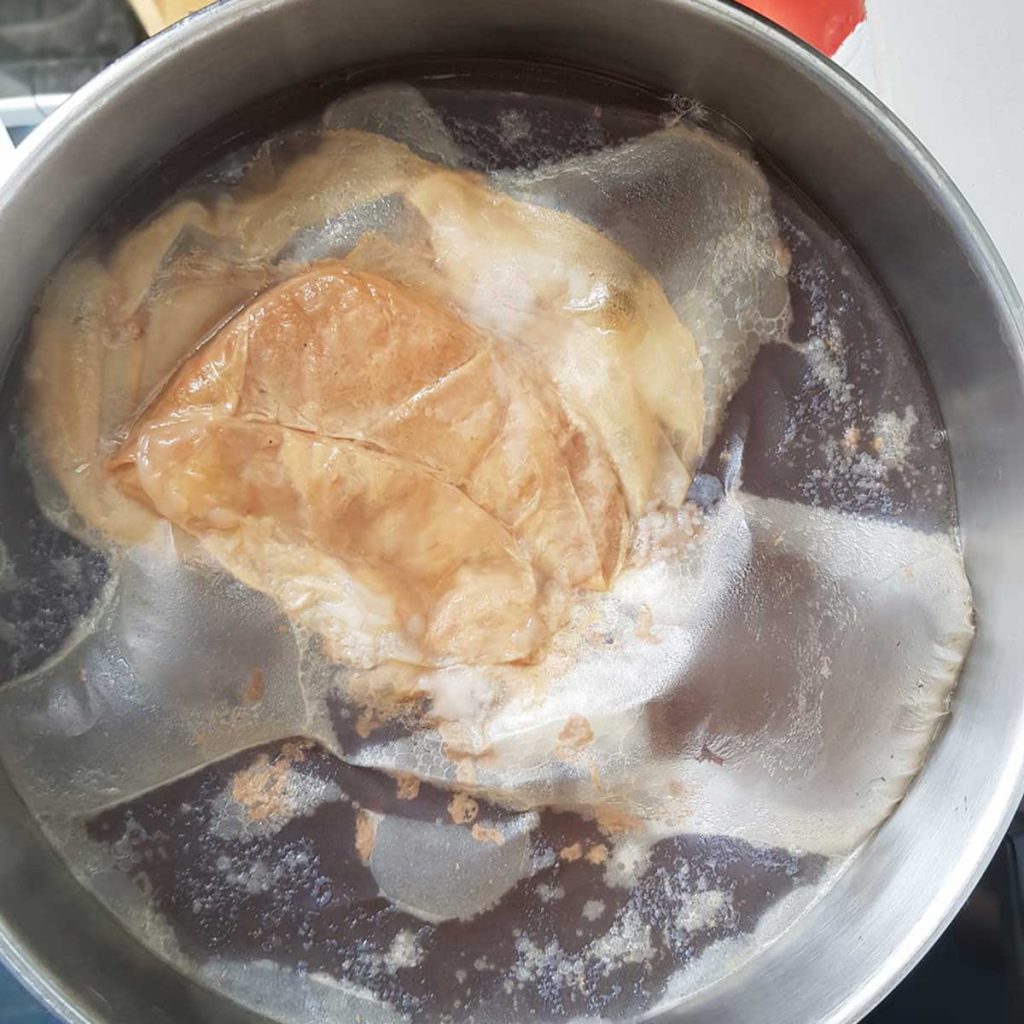
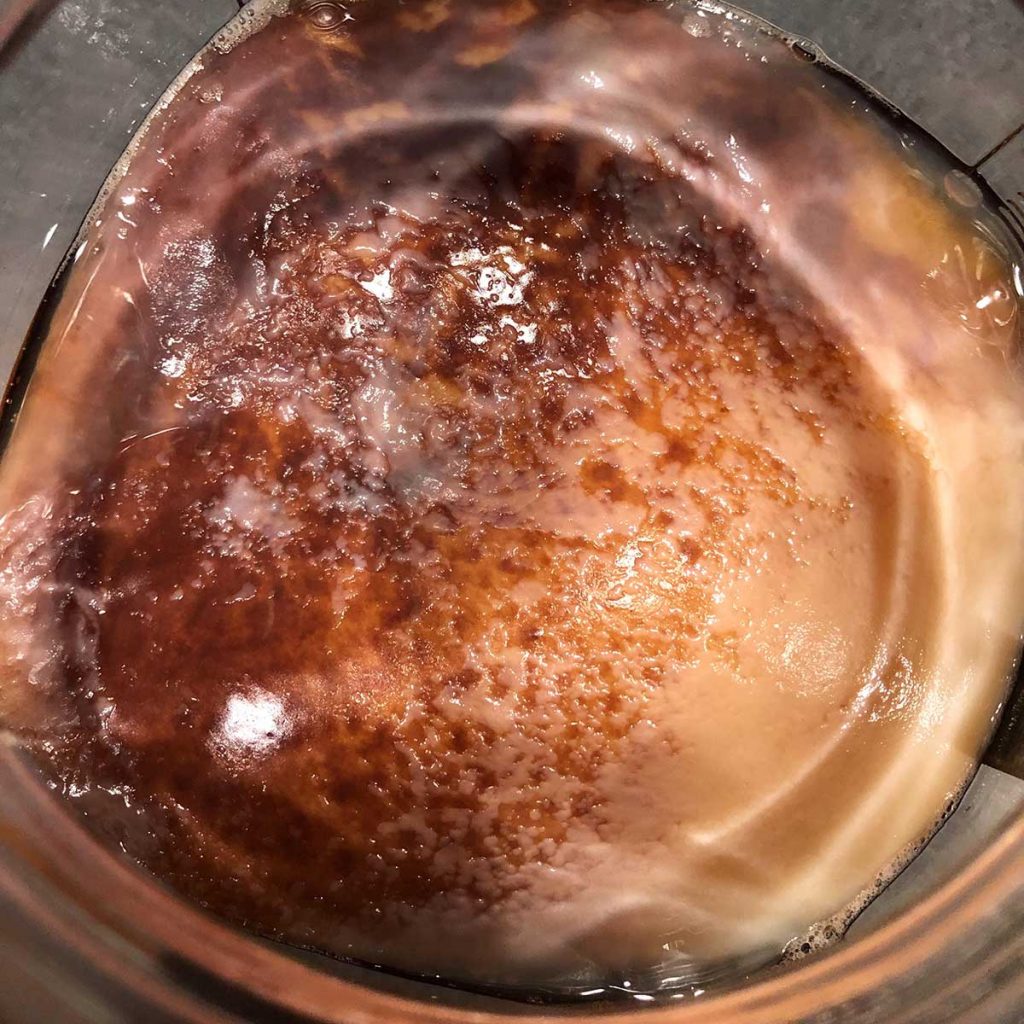
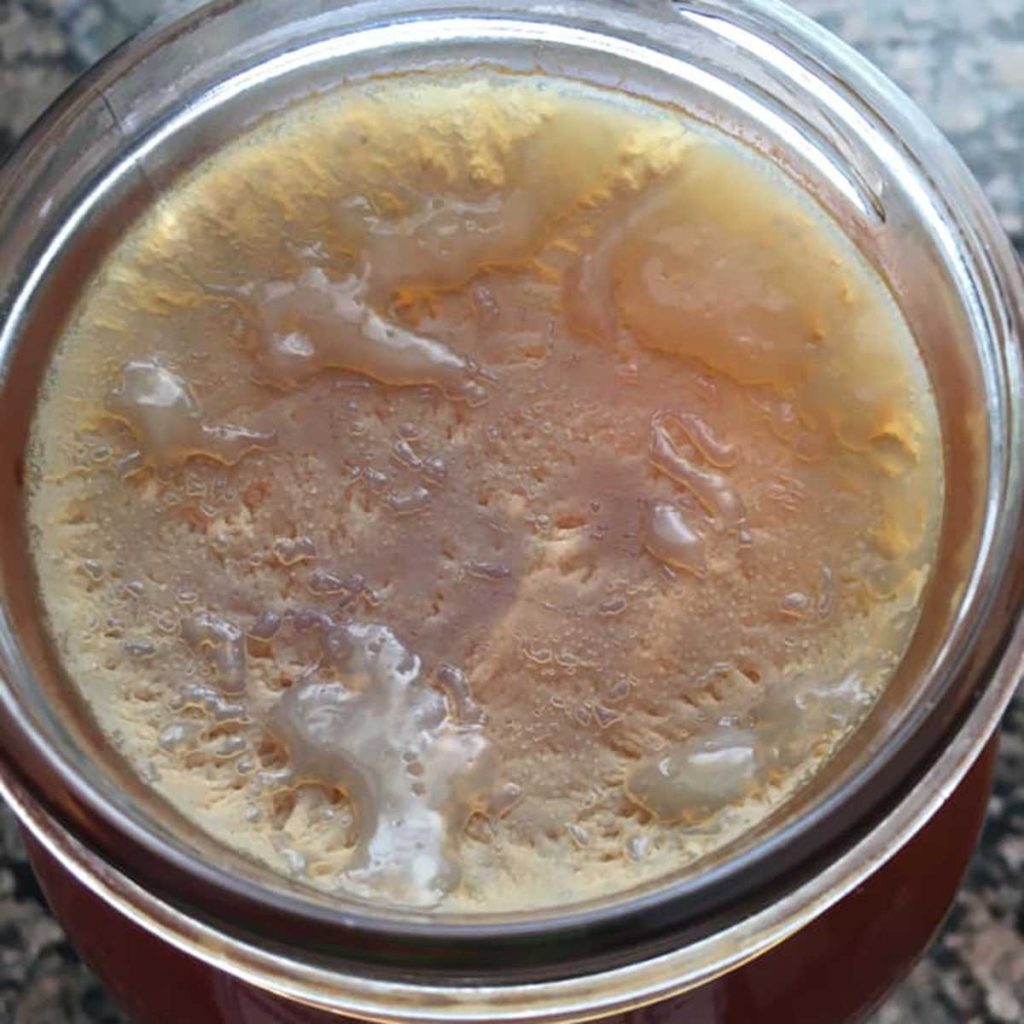
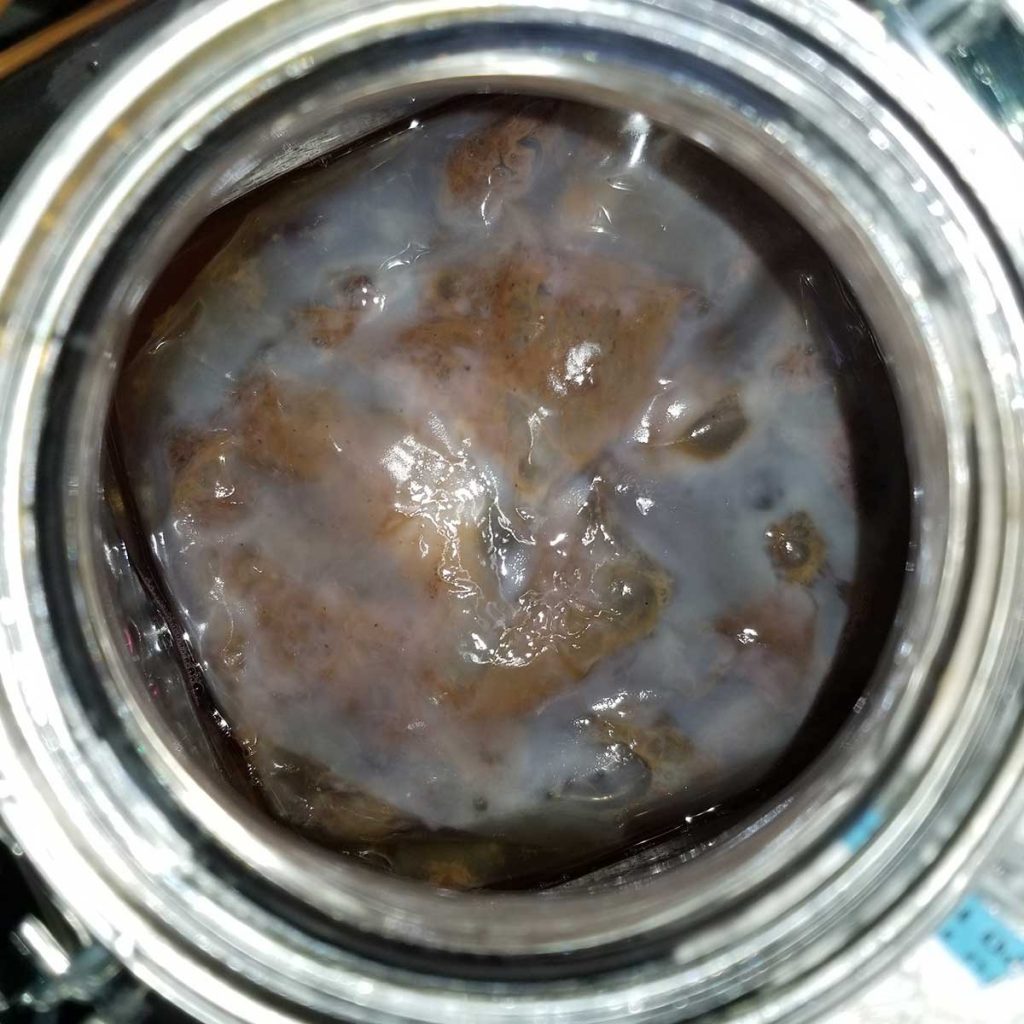
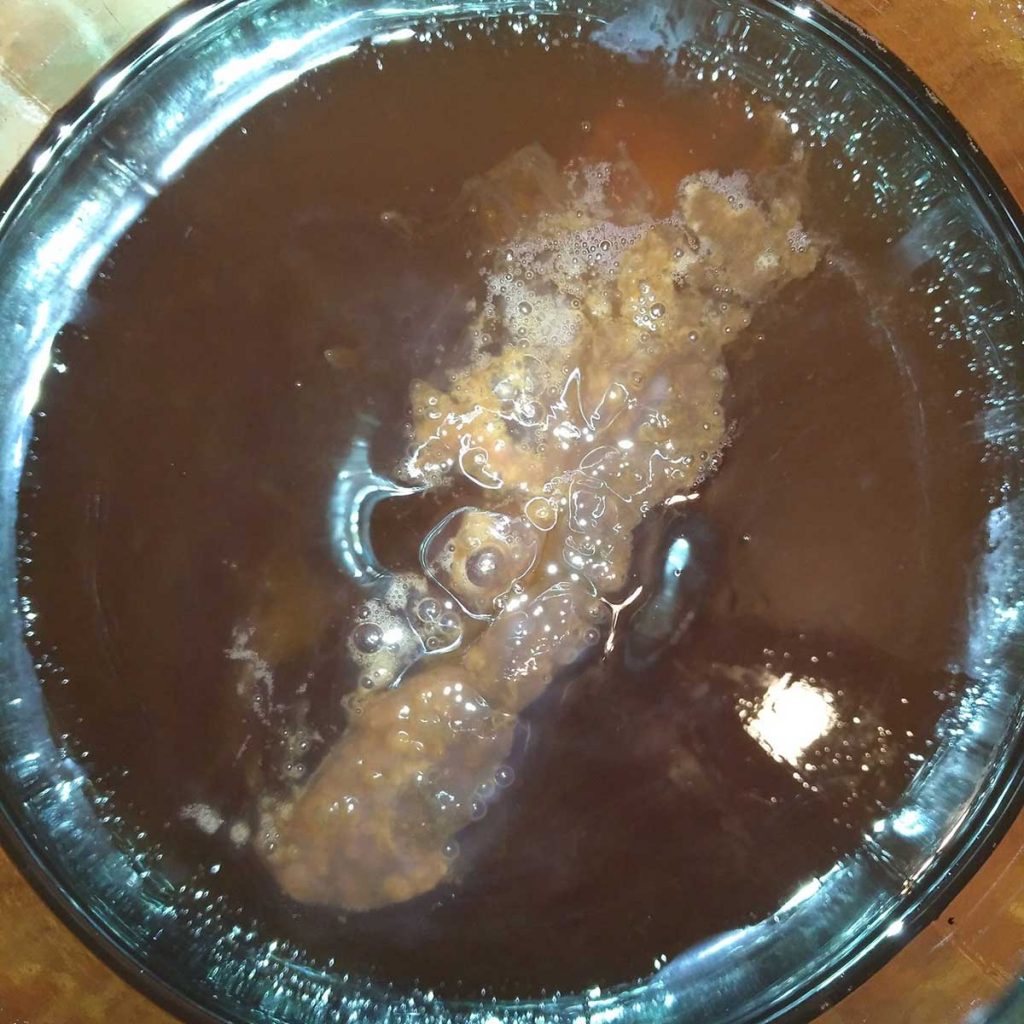
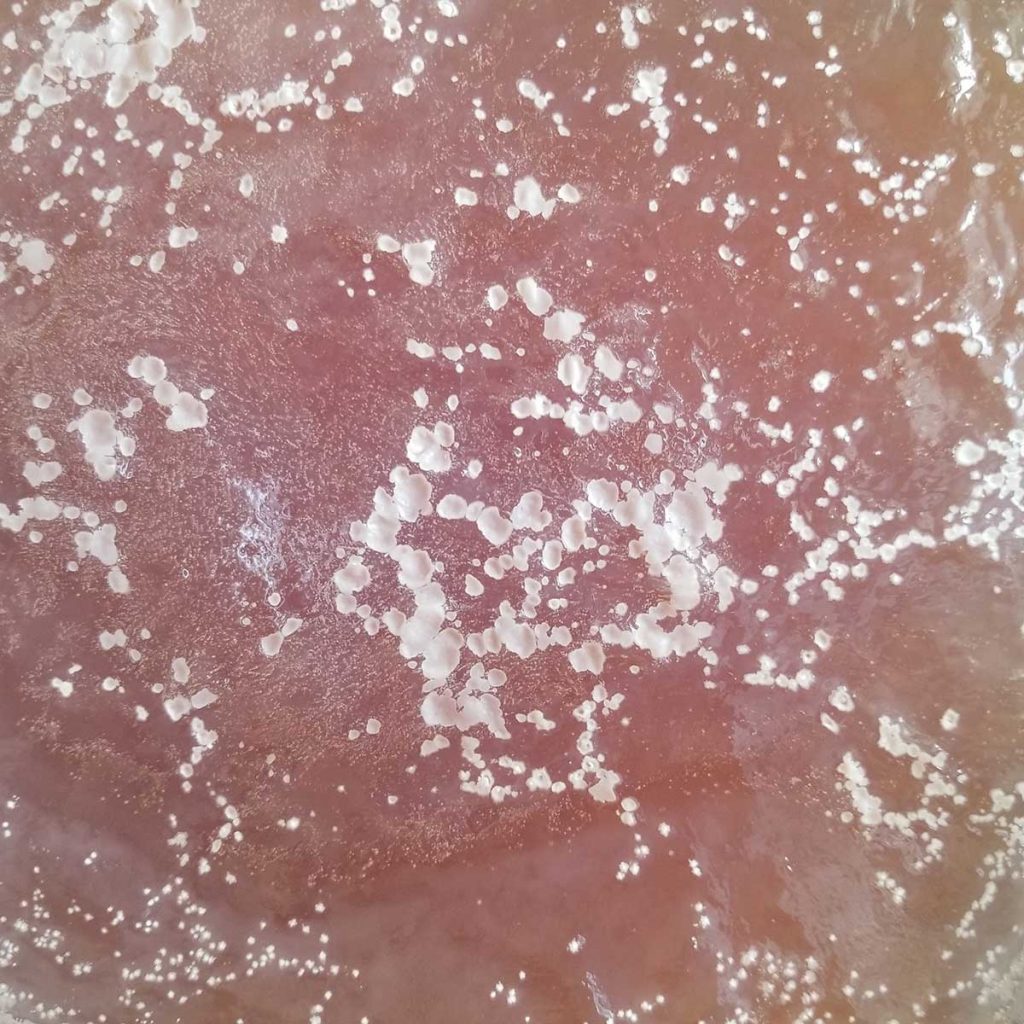
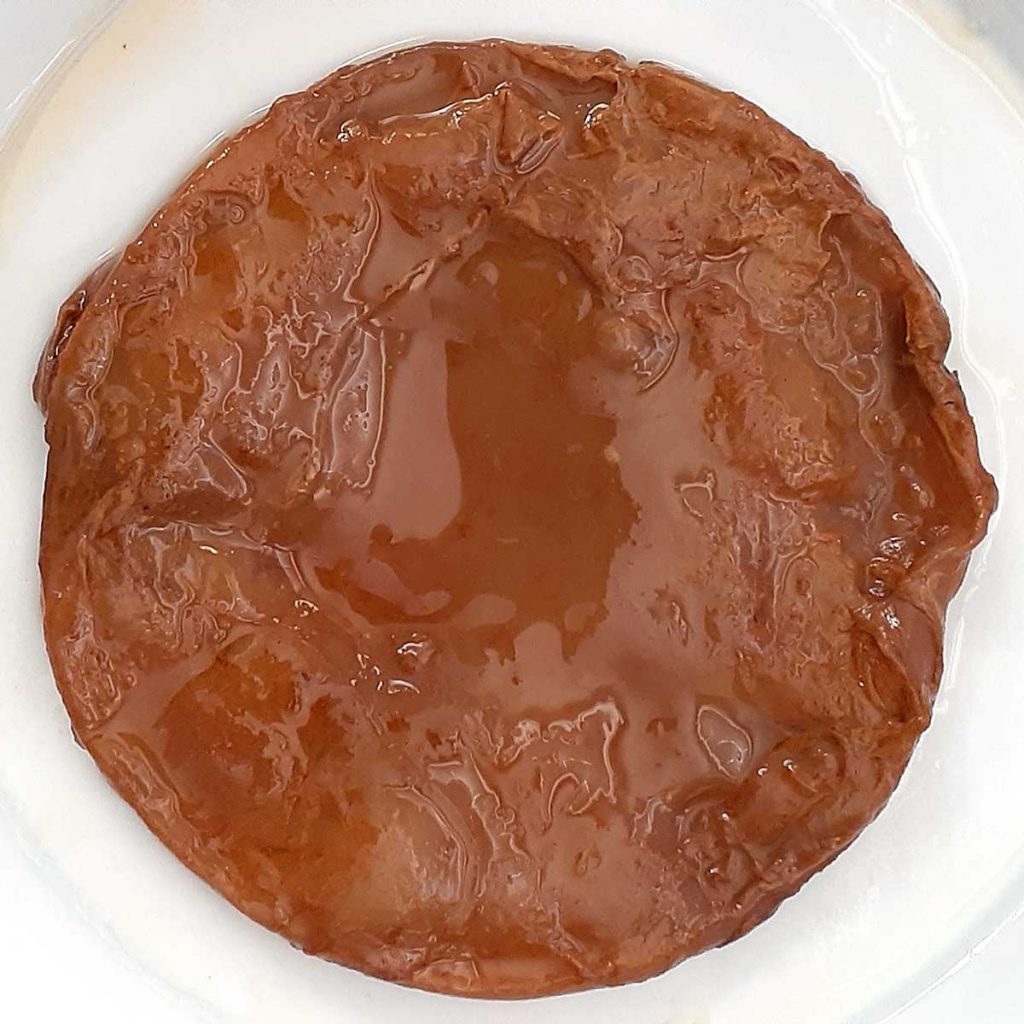
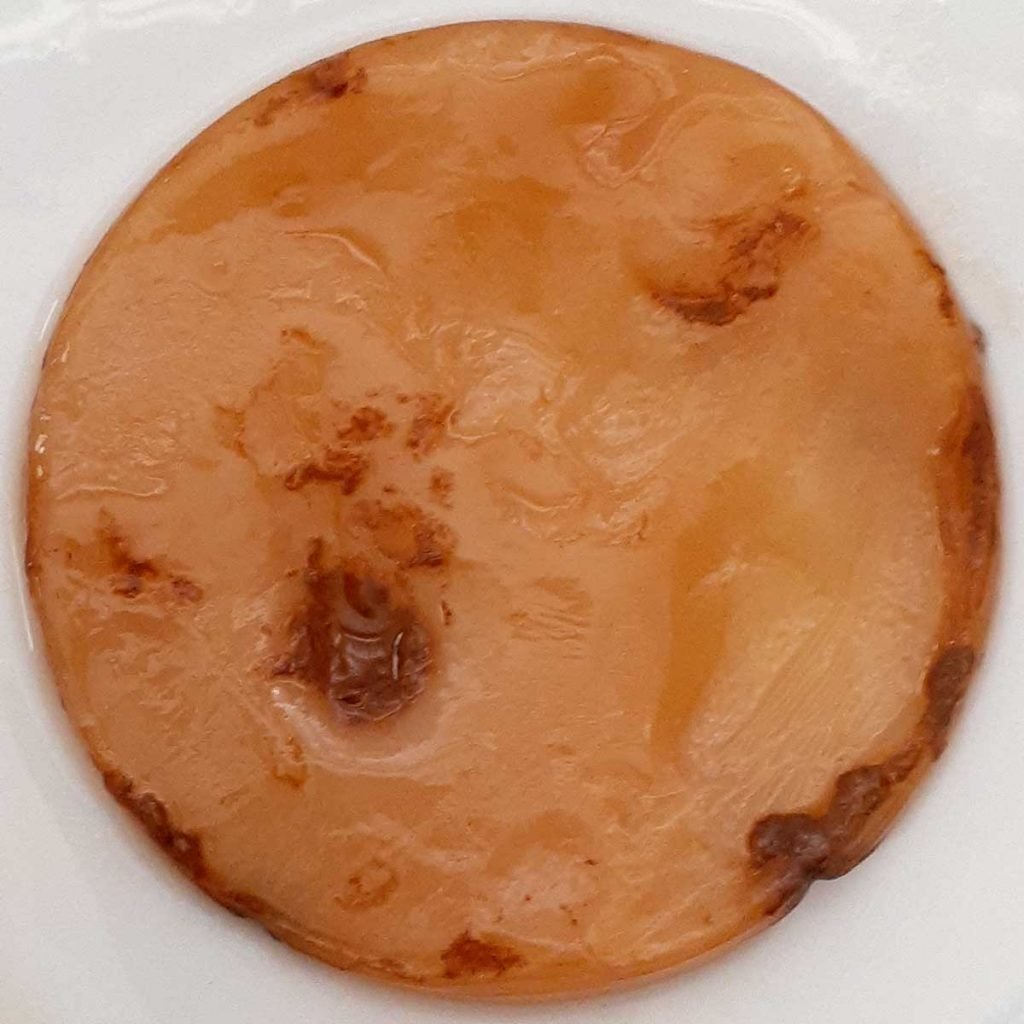
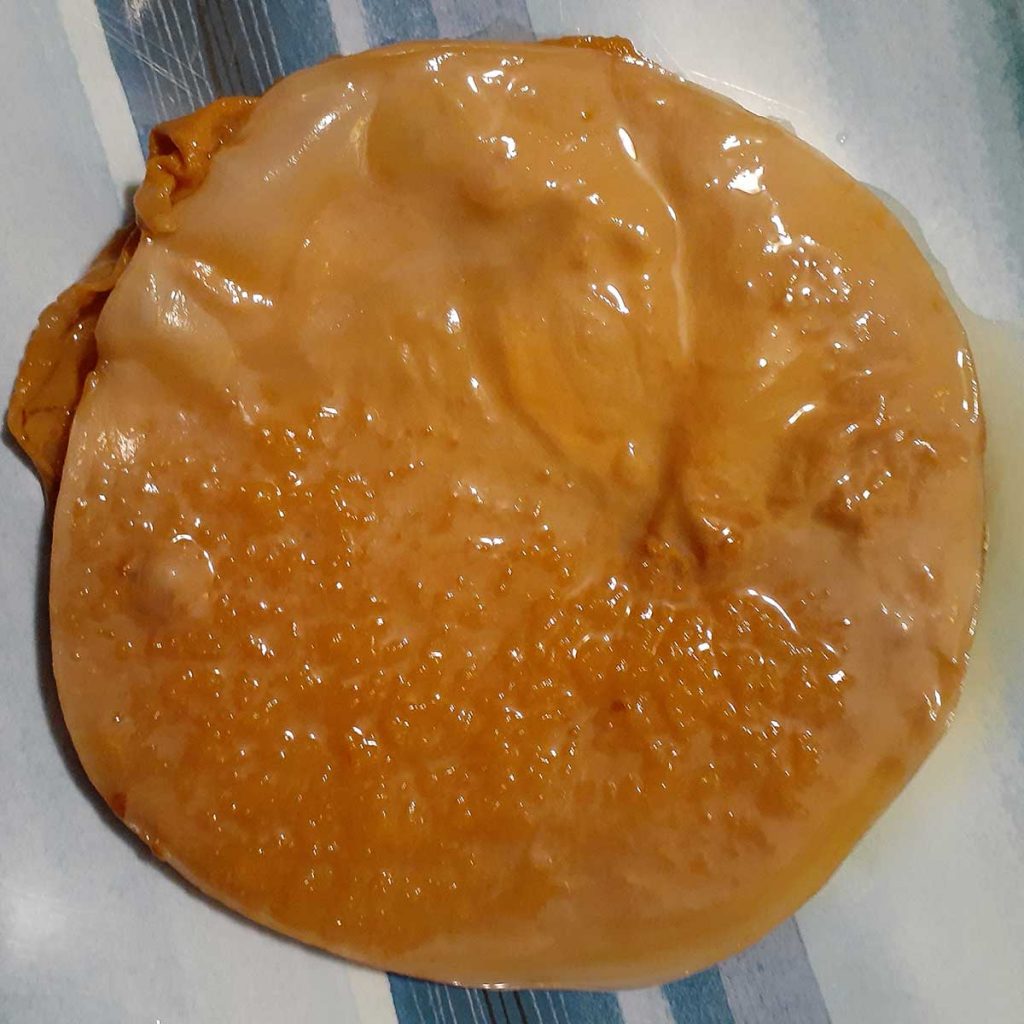
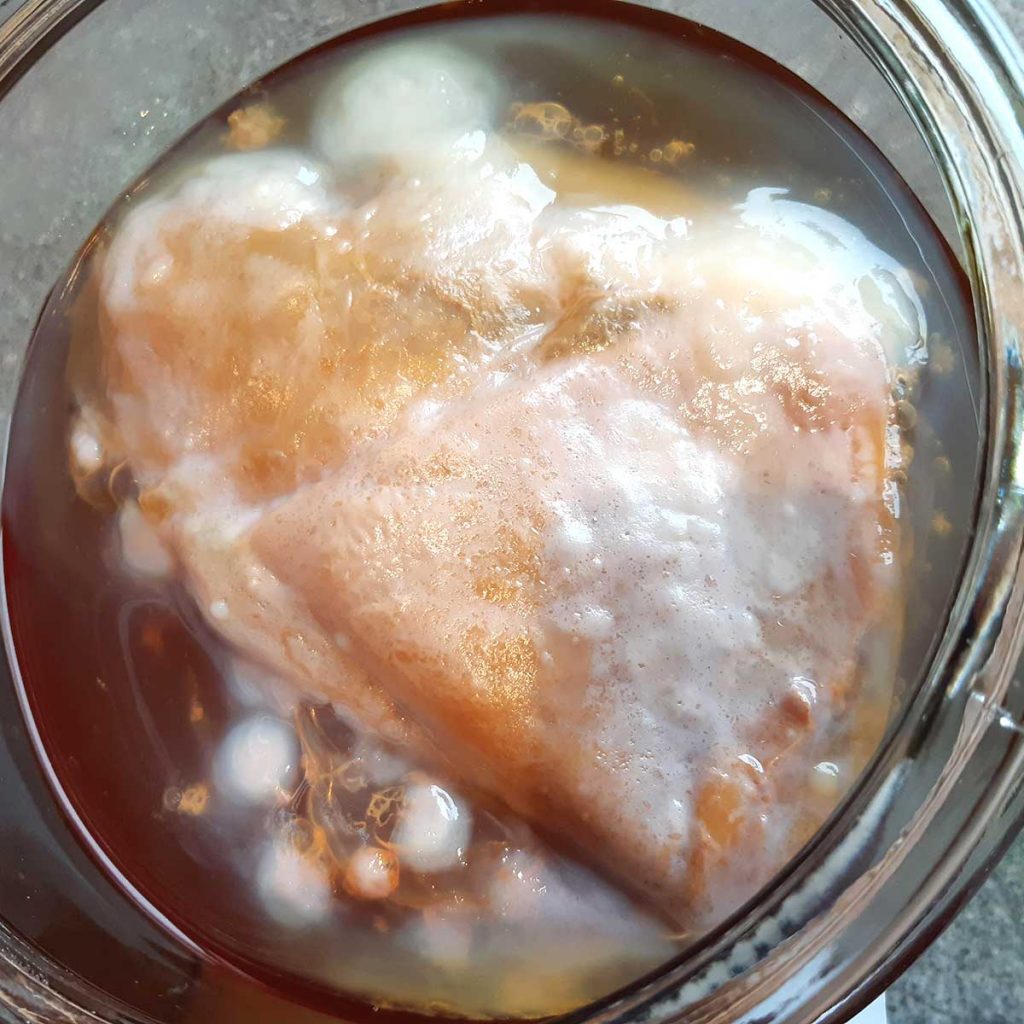
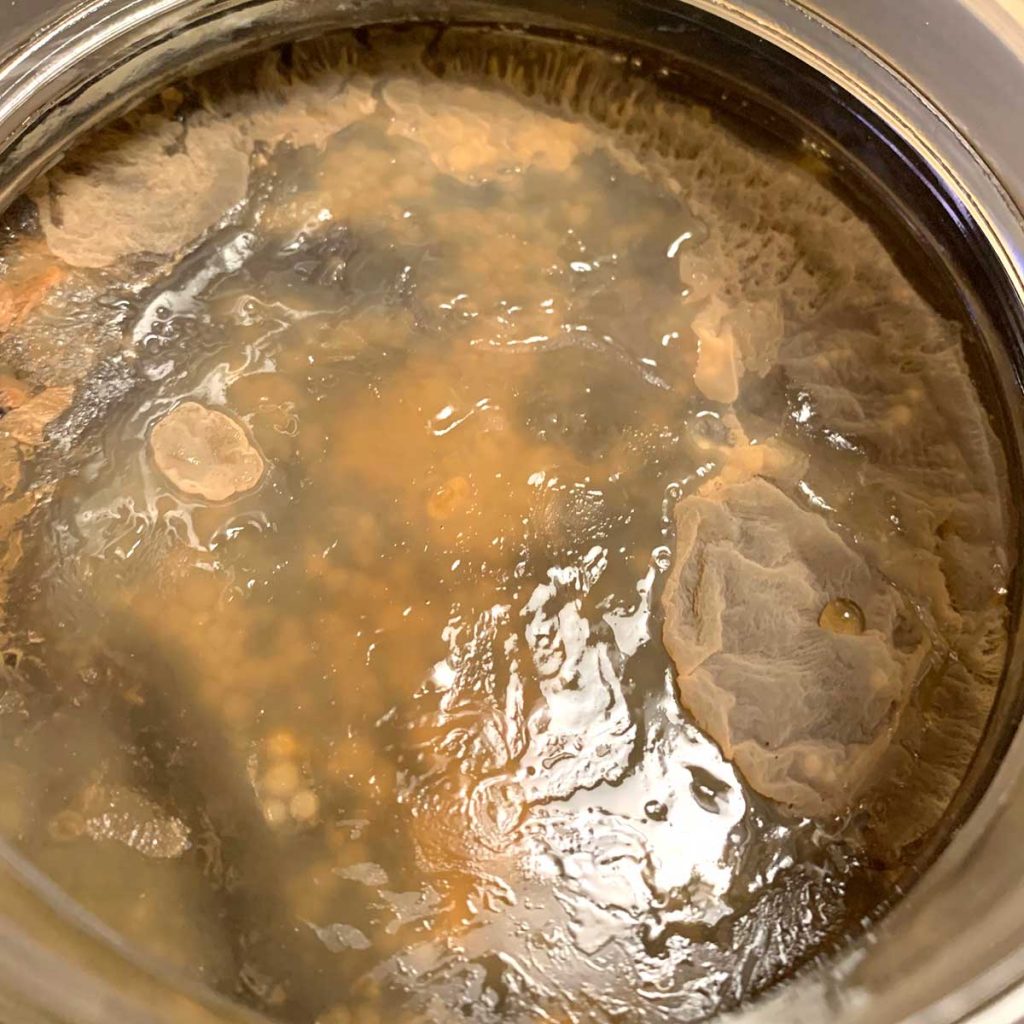
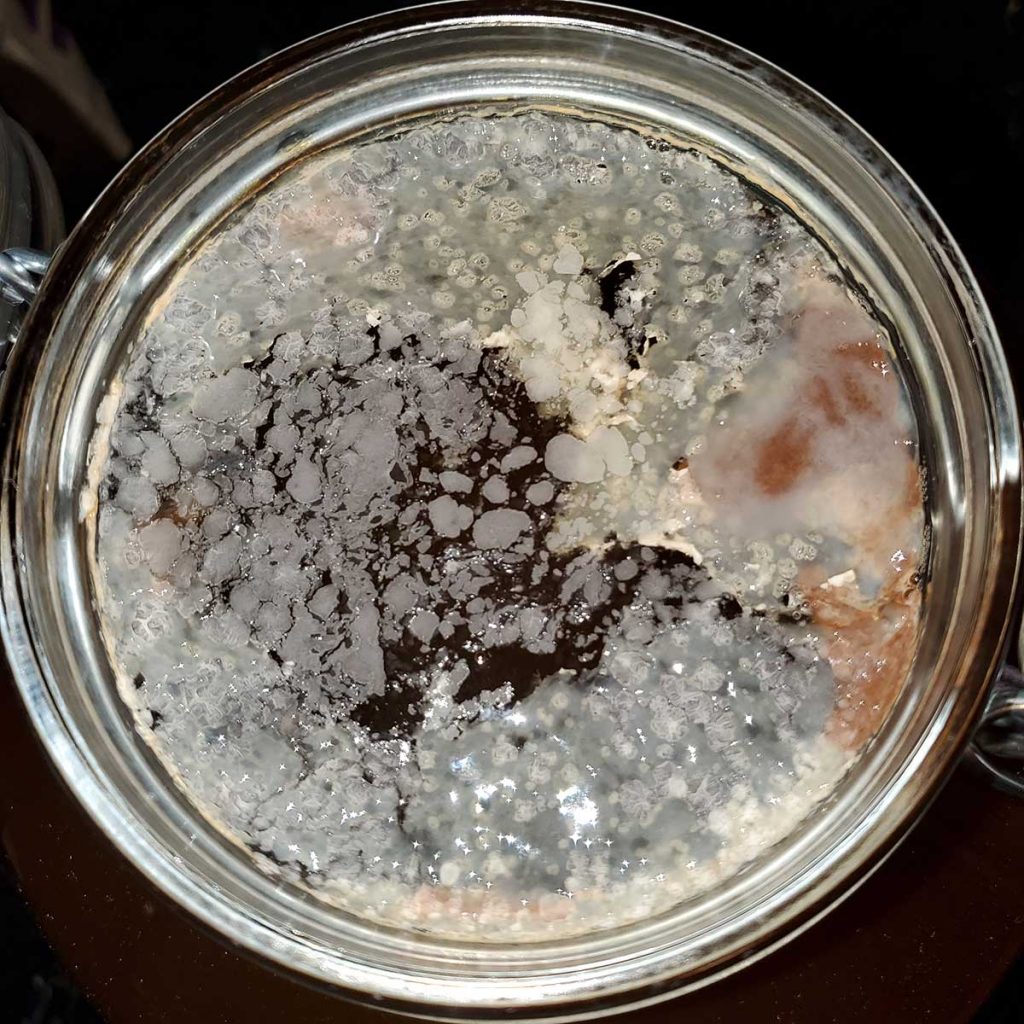
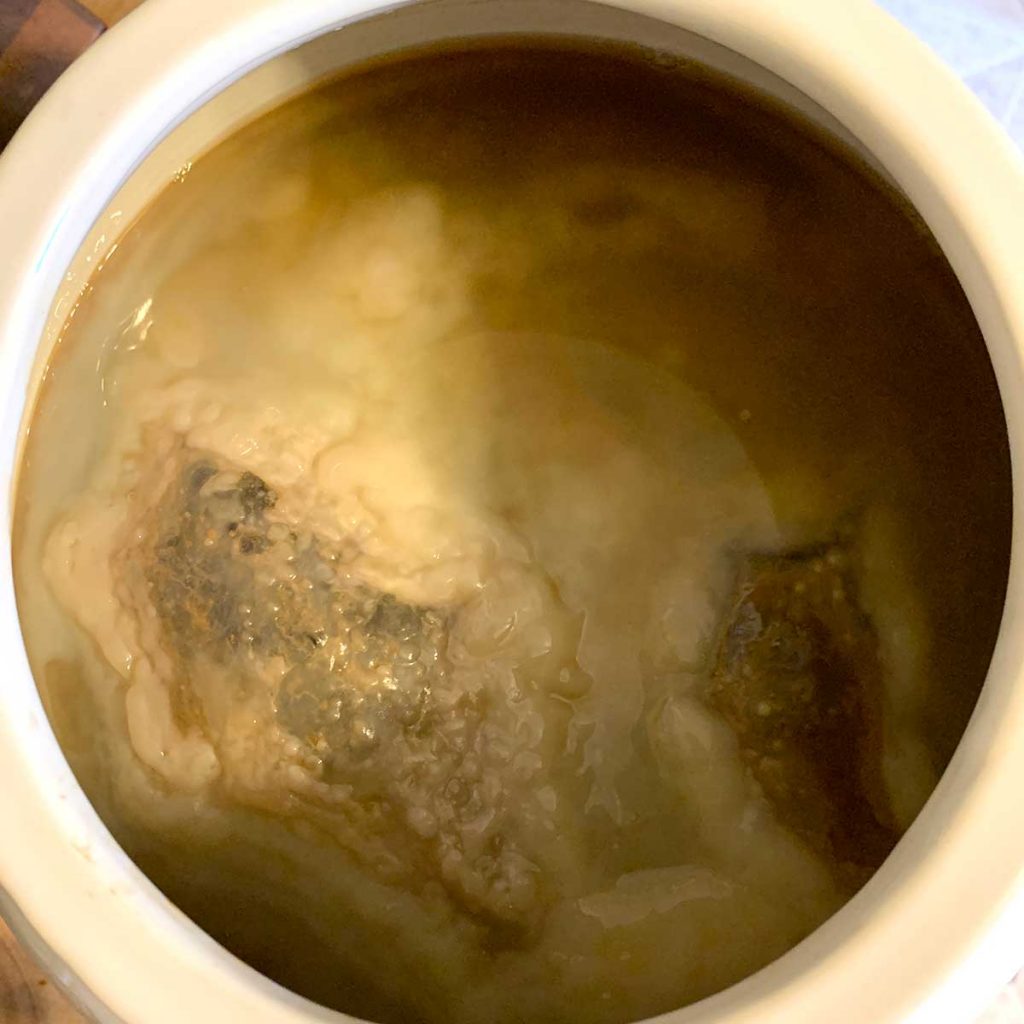
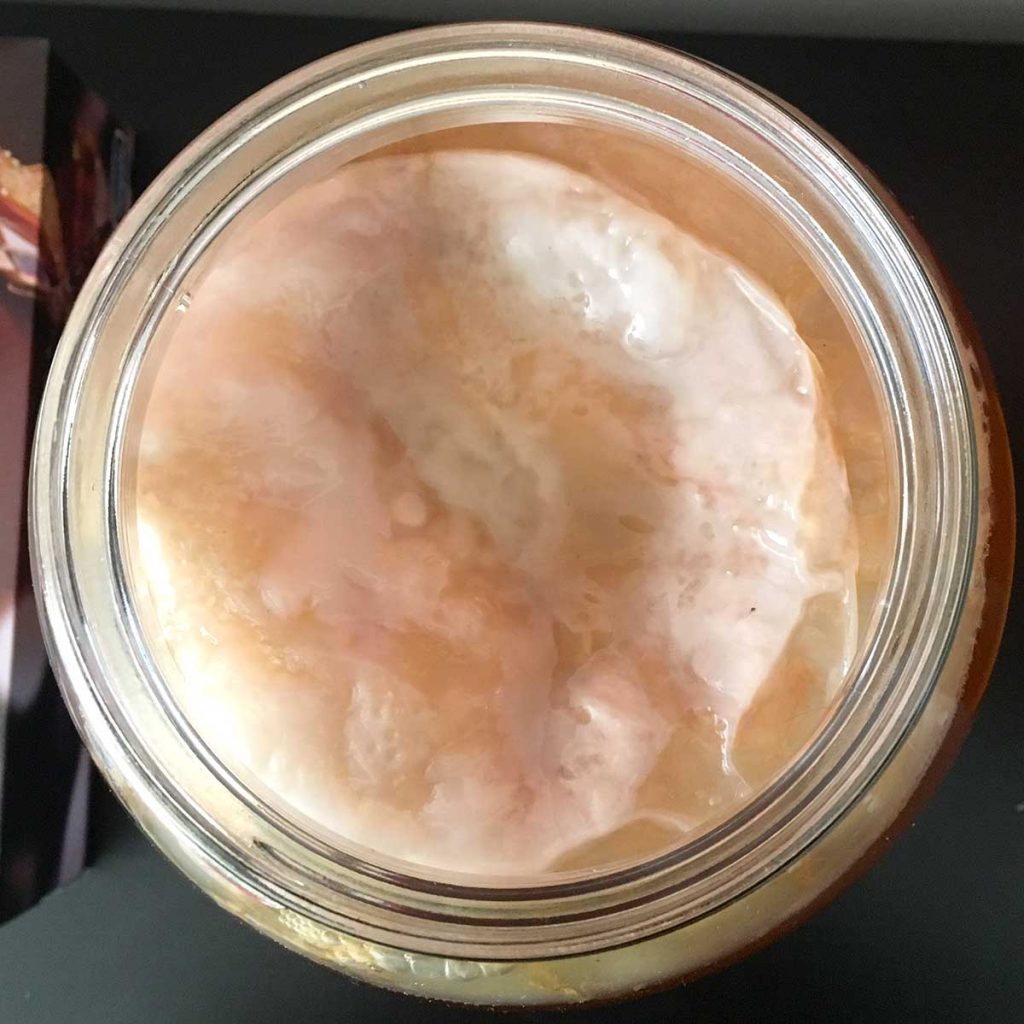
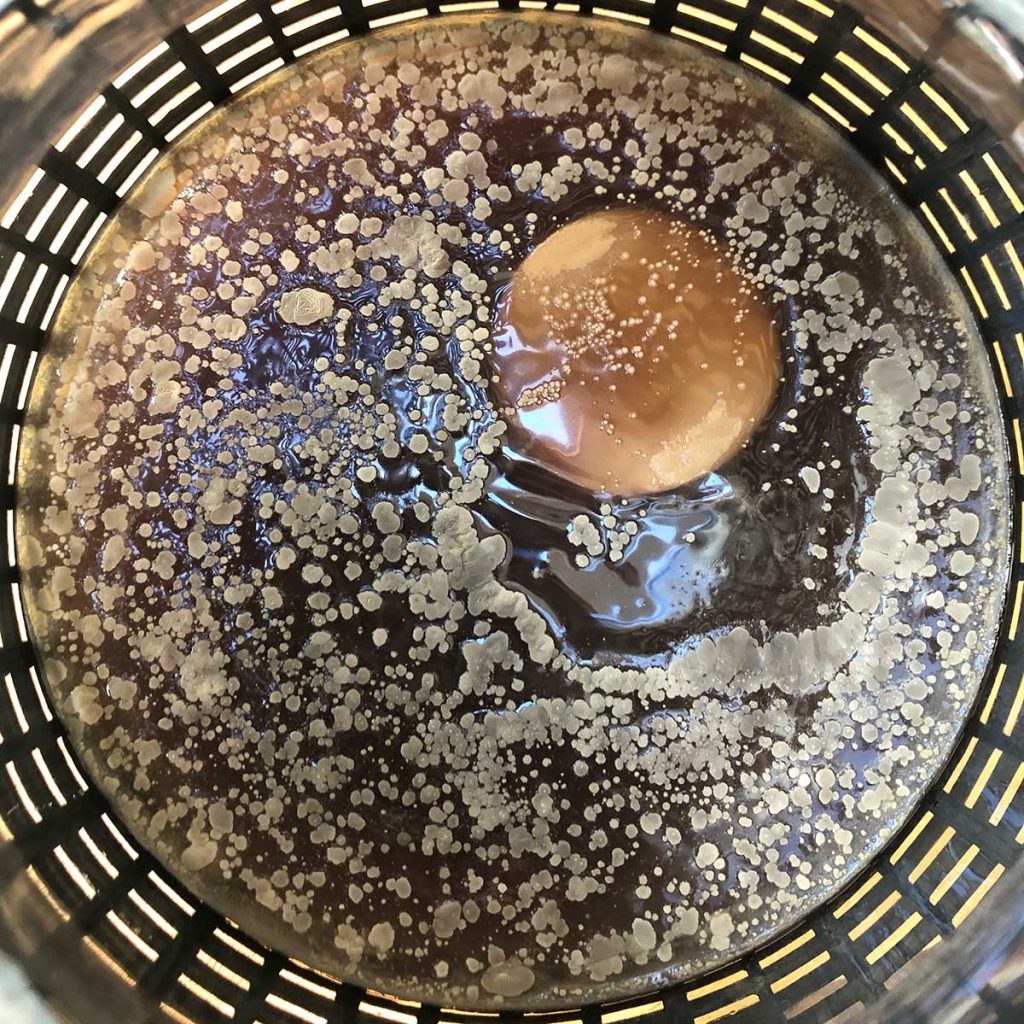
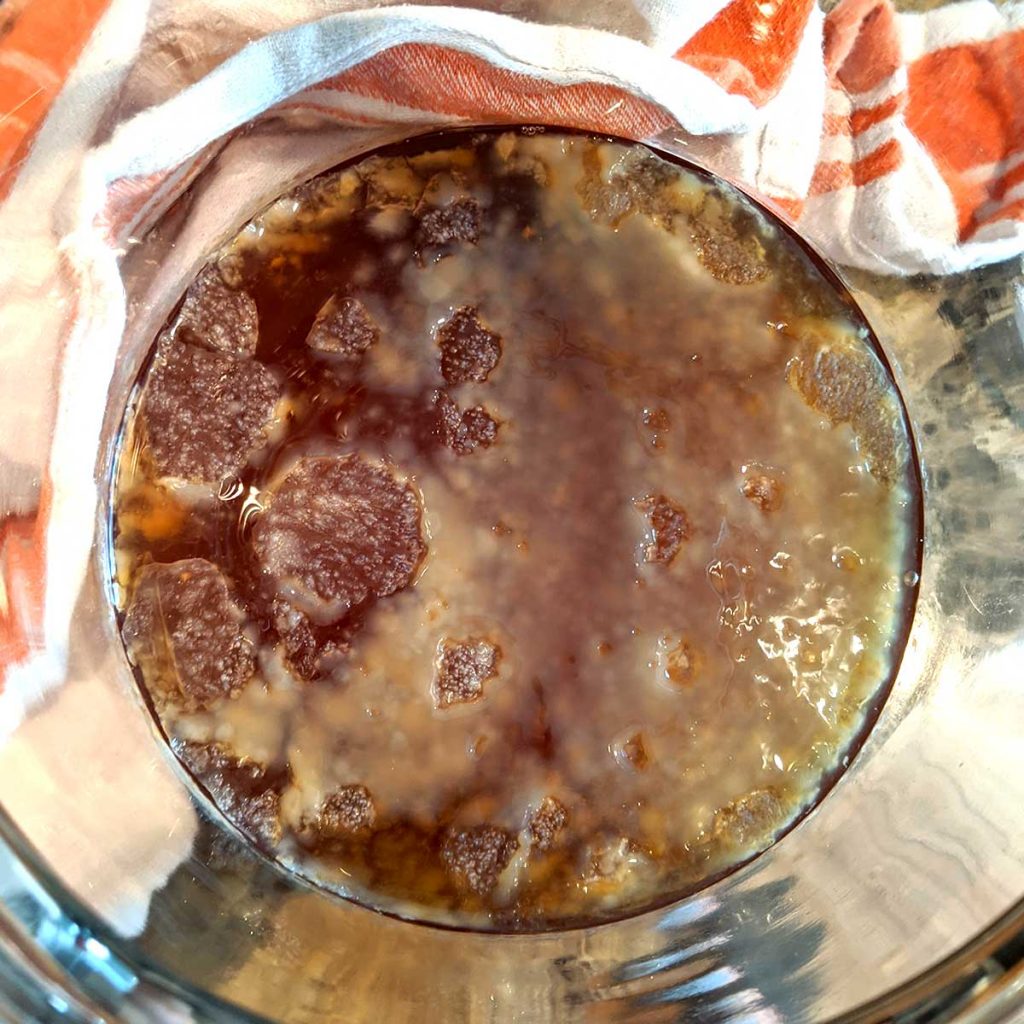
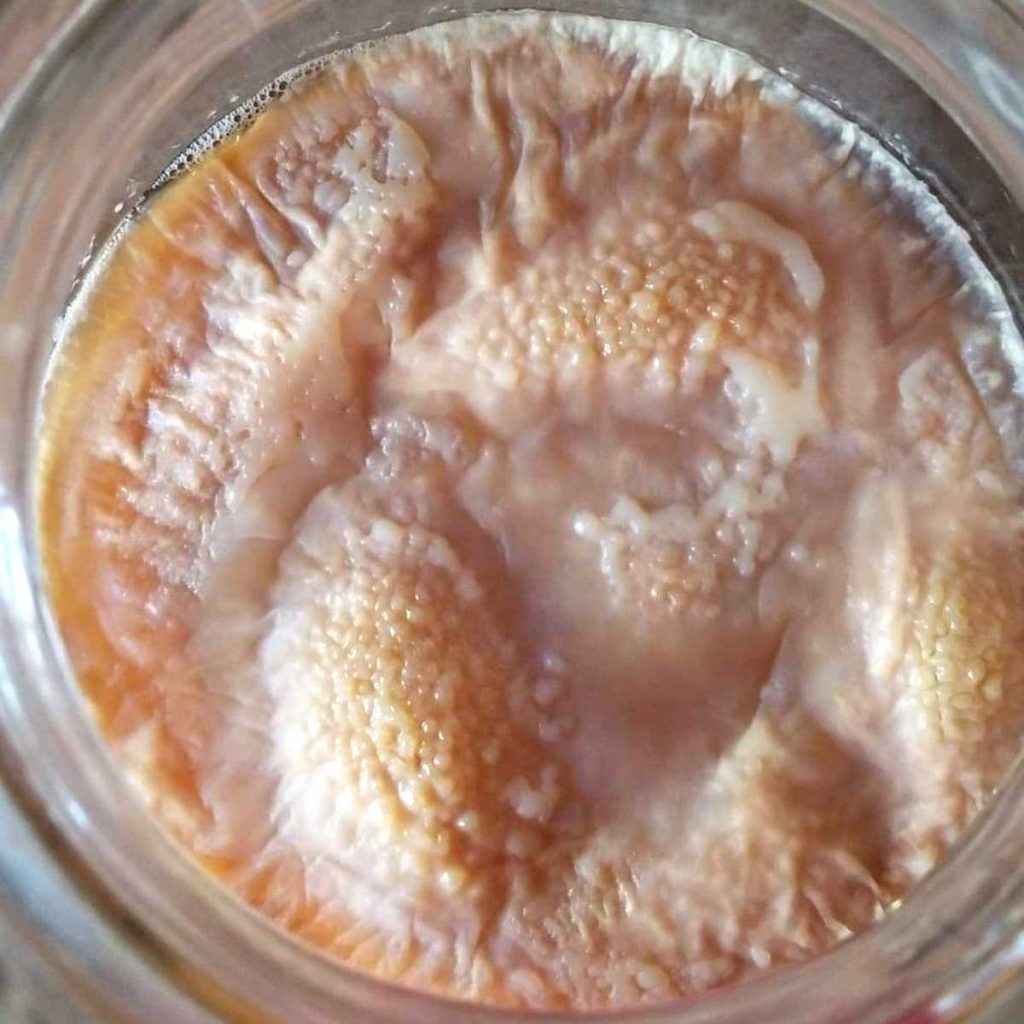
You got mold, now what?
First off, my condolences. Now it’s time to make your peace and throw it all away. The SCOBY, the tea, everything. There may be microscopic mold spores that you can’t see in the kombucha, so you’ll need to toss out the whole batch.
Next step, sterilize everything very well using boiling water and distilled white vinegar. (Here’s how I sterilize my kombucha supplies).
Finally, learn from your mistakes and move on. Figure out where you may have gone wrong so you can prevent mold from ever happening again. Can’t figure out what went wrong? Read the kombucha master recipe again closely in case you missed something. And feel free to email me with your questions!


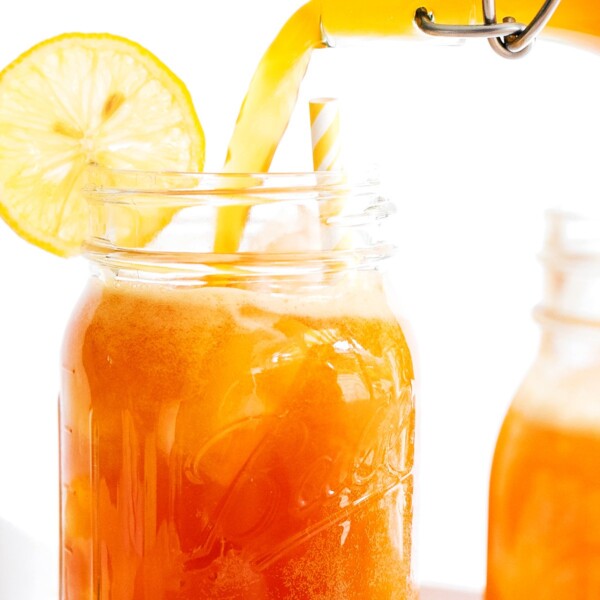
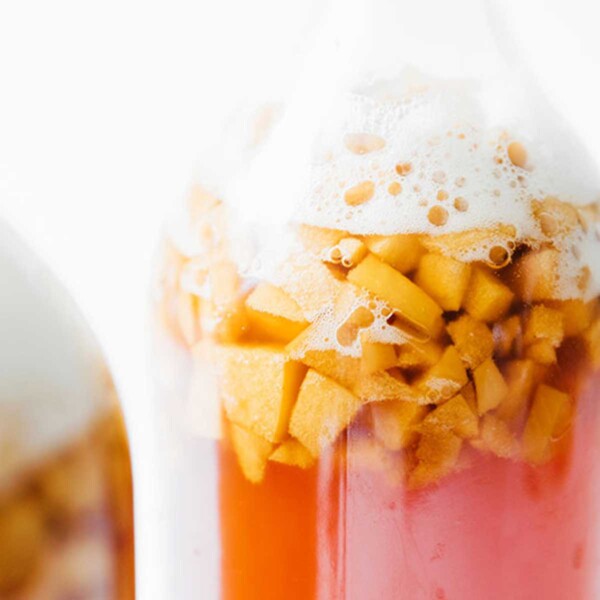
Thank you! So informative and the pictures were really helpful
I’m so happy to hear that this was helpful, Elise!.
I got scoby from my friend.
Today is my day of 12th.
When I opened the clothe,
The surface is covered of full of black and grey powder.
Is it mold?
Could you support me?
Thank you very much!
Oh no—so sorry you’re dealing with this! If the surface is covered in black and grey powder, that unfortunately does sound like mold. Mold usually appears dry, fuzzy, or powdery and sits right on top of the SCOBY or liquid. If that’s what you’re seeing, it’s safest to throw out the whole batch, including the SCOBY—it’s just not worth the risk to your health.
Be sure to sanitize everything really well before starting again, and if you can, ask your friend for a fresh SCOBY and some strong starter liquid to try again. You’ve got this! 💪
I got a SCOBY from Fermentaholics on Amazon. I noticed it came with little black spots on it. I went ahead with the fermentation process (I’m at 8 days now) and I think a new one has formed at the top, although very clear looking, and the original one has sunk to the bottom. Those black spots bother me though; none of the pictures you posted look quite like it. When you respond to this question could you leave the email that is affiliated with your blog so I can send you a picture? I’m having problems with the email button (it’s on my end). I do not have social media so cannot post to FB. Thank you in advance!
Feel free to email [email protected] 🙂
I have been fermenting for 4 weeks, when I checked it the top scoby had a couple of blue spots. I took the thin babies that were slimy out. The mother is thick and the brew is still sweet. Do I let it brew longer or should I throw it away and start over?
Thank you Nance
Thanks for the question, Nance—and sorry you’re dealing with a tricky batch! If you’re seeing blue spots, that’s almost always mold, and unfortunately that means it’s safest to toss the whole batch—including the SCOBYs. Even if the mother looks okay, mold spores can spread invisibly through the liquid, and it’s not worth the risk to your health. I know it’s a bummer (especially after 4 weeks!), but starting fresh with a clean jar and a new SCOBY is the safest move. You’ve got this!
Hello. I’d really love to send you a few photos of my batch, as I have never seen it like this before. Generally I use black or green teas and honey, but this time I had a fruit variety of blueberry, elderberry, hibiscus, apple ,rosehips, pomegranate bits, cornflowers and pineapple flavoring paired with a thick Brazilian honey from Thrive Market and 7-stage filtered water was brewed 13 days ago and it’s a lumpy scoby with some opaque orbs on top. Granted it smells tangy as kombucha should and all the additional fruits could contribute to different enzymatic activity/different fermentation but I was hoping to ask an expert prior to sampling. Sadly one container had some black and yellow mold on it that was discarded, but the other one is hanging on. It’s frustrating seeing this despite careful measures to prevent contamination, but I’ve won some and lost some batches (and kept a SCOBY for 3 years before!). Thanks for the aid.
Sorry for the late response—and thank you for the super detailed message (and for hanging in there through the ups and downs of brewing)! With that many fruits and botanicals in the mix, it’s totally normal to see a lumpy or oddly textured SCOBY and even those little opaque orbs—they’re likely just pockets of yeast or kombucha sediment. That said, the fact that one jar had visible mold means you’ll want to be extra cautious with the second one, even if it smells fine. If there’s any doubt, I’d play it safe and toss it, especially since mold spores can transfer invisibly between containers. Totally understand the frustration—it sounds like you’ve got solid instincts and experience, so I have no doubt your next batch will be back on track!
Hi! I have been waiting on my batch for just about 2 weeks and i dont see a film or scoby. There are chunks floating that were not there when i brewed and some fizzy. It does smell like koumbucha but I am wanting to know if anyone else had this issue before i try for a second fermentation.
It sounds like your kombucha is doing just fine. Sometimes it takes longer than two weeks for a new SCOBY to form, especially if your room is cool or your starter tea wasn’t super strong. The floating chunks and the fizzy smell are good signs that fermentation is happening. If it smells like kombucha and tastes tangy rather than sweet, you can go ahead and move to the second fermentation even if the SCOBY isn’t fully formed yet. If it still tastes sweet, give it a few more days to sour up before bottling.
I found some black stuff forming on my scout and I was concerned, I scraped it off and cut off some, my next batch of brew seemed fine. What do you think think?
If it was dark and slimy then it was probably yeast! If it was dry or fuzzy then likely mold.
Hi, i poured my kombucha in a glass jug and a new scobi started growing so i left it to grow and kept drinking from it without realizing the tea was too low in the jug for it. It had 3 green dots of mould on it. So i top it up a little with juice, the mould went away. I havent drank from it, but i was wondering if that would still be ok to top it up completely and contonue drinking from it?
If there are any traces of mold I wouldn’t consume it, as the mold spores can cause new patches to regrow.
Is 60-65 degrees F a safe temperature for making kombucha? I have six 1-gal glass jars that I have been using for about a year or so, but I am concerned about whether or not that temperature is too low for the fermentation process. This is the ideal location for me to keep them, but maybe I need to look for a new spot to get the optimal temperature for making kombucha.
That’s on the cooler side. If you can find somewhere warmer or get some heating pads that would be ideal for preventing mold and keeping the fermentation running.
I think my kombucha is starting to go moldy. I wish I can attach my pics of it for you to check.
Feel free to post photos in our Facebook group! 🙂